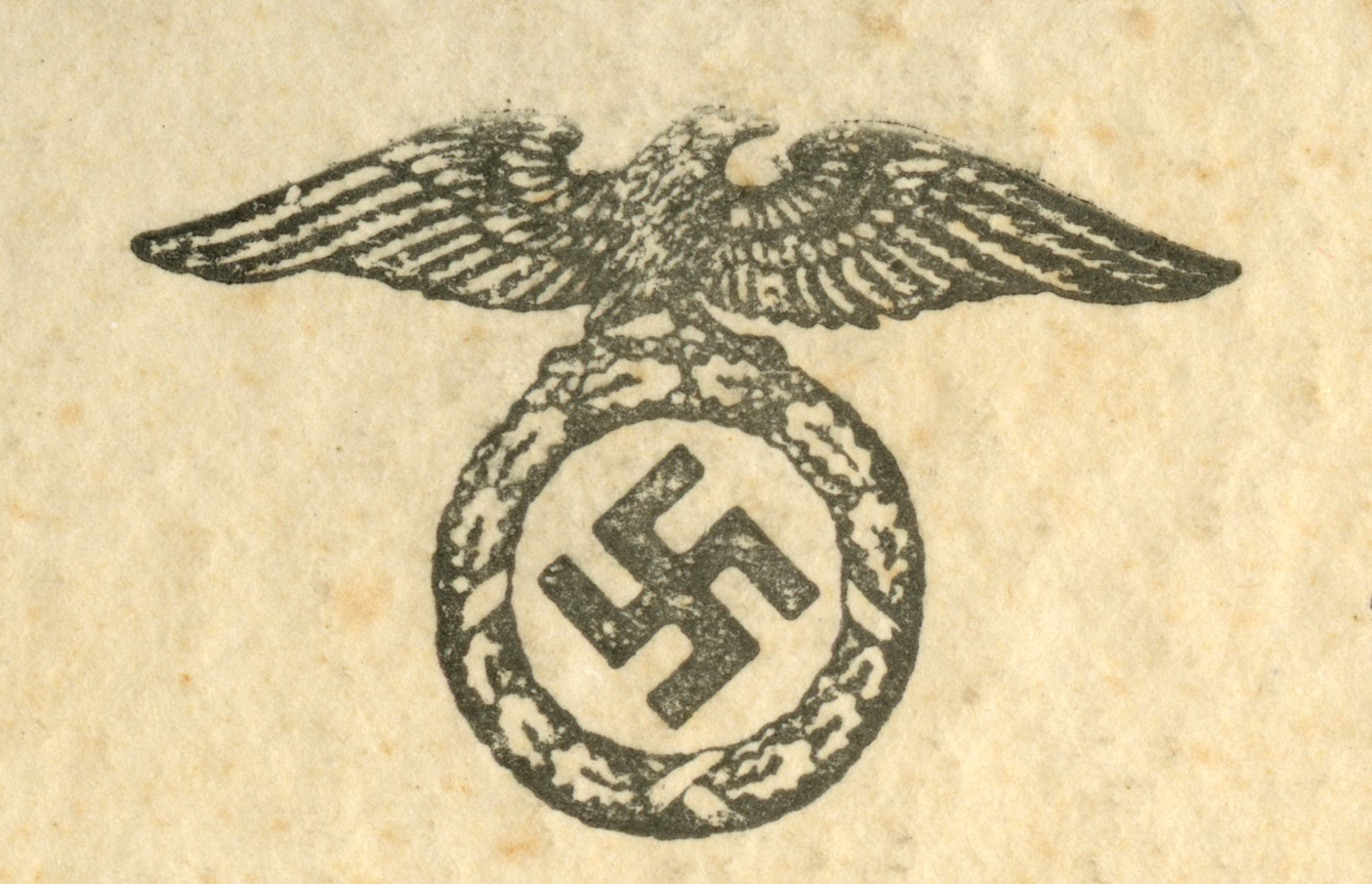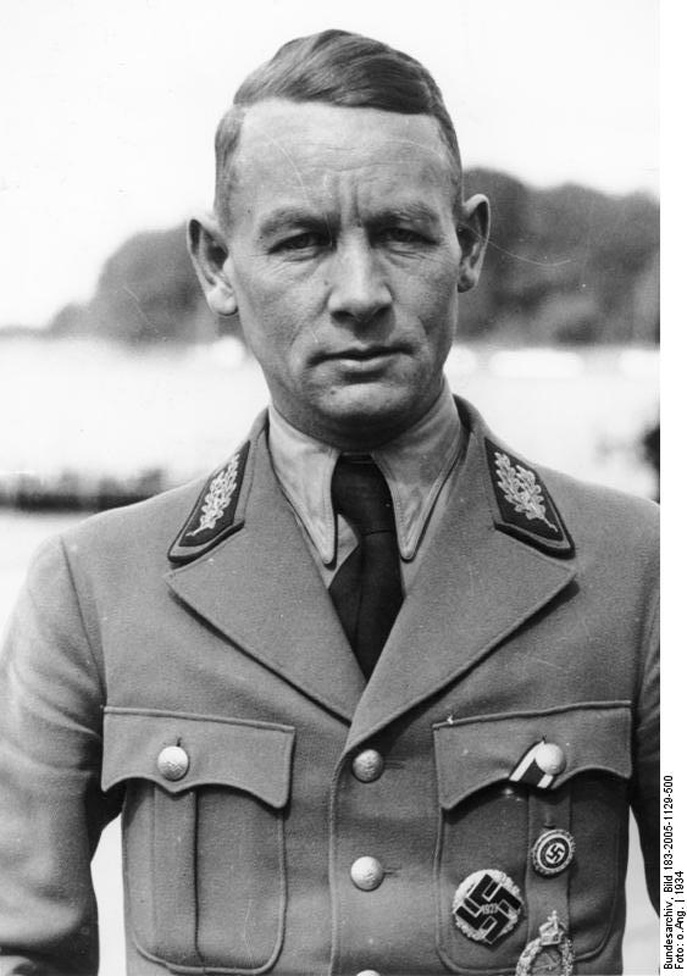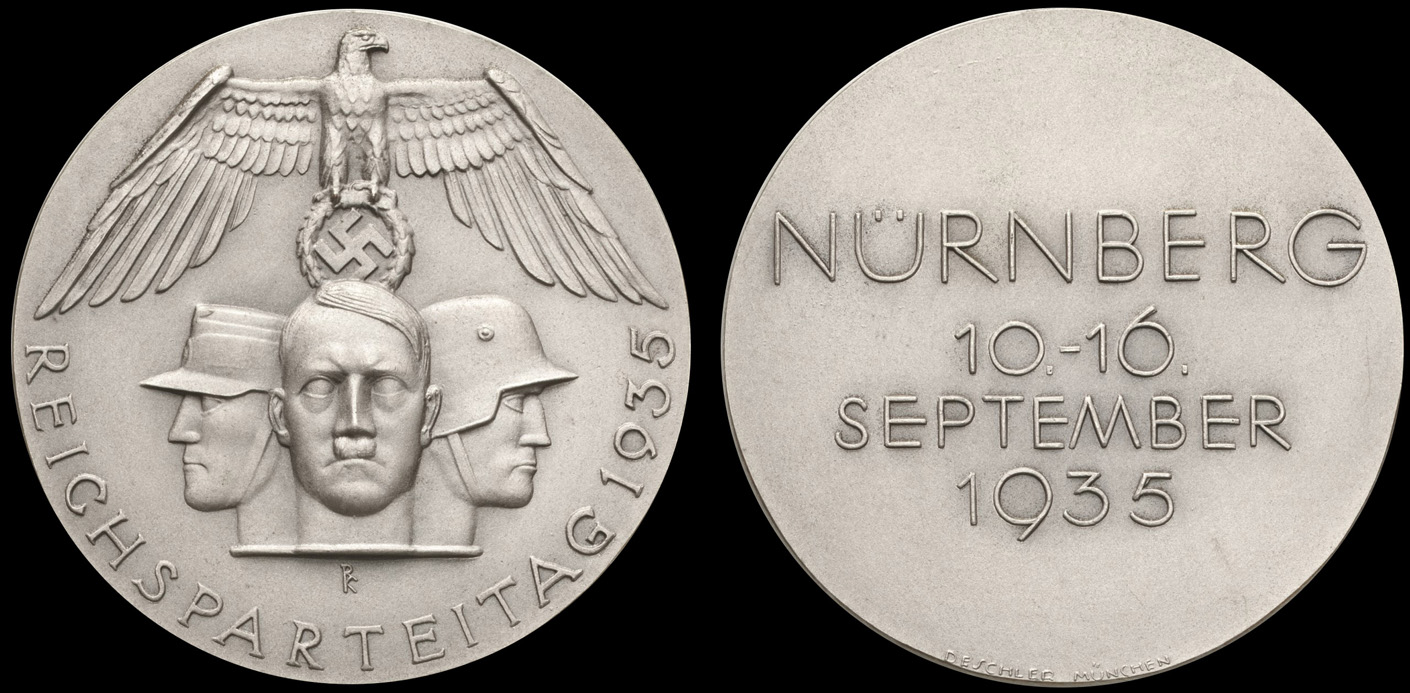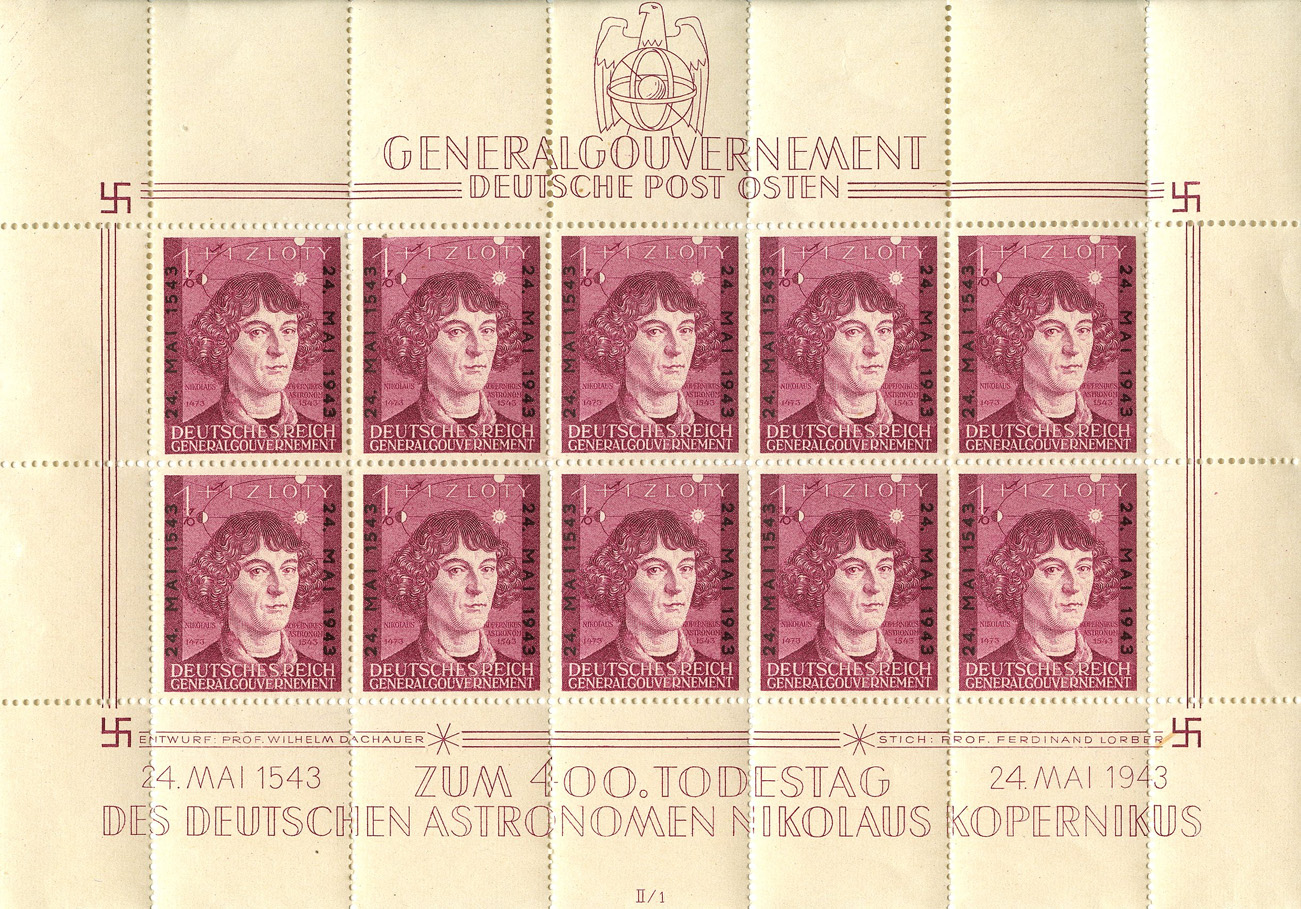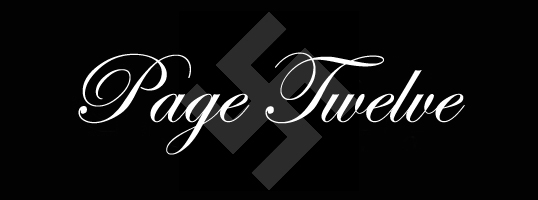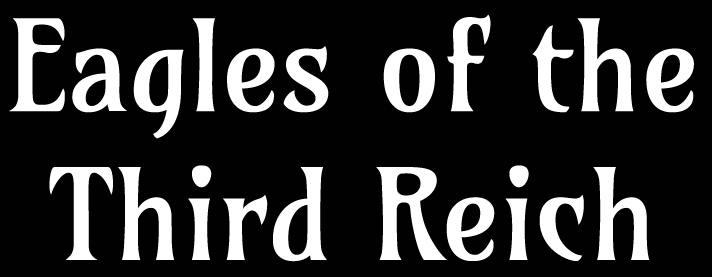
[Below: This is a cool-looking envelope from Bohemia and Moravia (Czechoslovakia), canceled in Prag on March 15, 1942. It celebrates three years within the German Reich. You can also see the postage stamps have been overprinted with the dates of the anniversary and eagles and swastikas. These were just normal Bohemia and Moravia postage stamps that they overprinted over.
This was a professional government overprint, unlike most of the Sudetenland overprints (above is one) that were just done unofficially at the post office. For instance, you could buy a sheet of stamps at the post office with the new overprint on them.]
[Below: Close-up.]
[Below: Close-up.]
[Below: Here are one hundred eagles and swastikas for ya! This is a sheet of rations stamps for the army. It says: 'Brotmarken für Wehrmachtangehörige' (Bread stamps for members of the Wehrmacht).]
[Below: This is a VERY early postcard. It looks like someone might have handmade it.]
[Below: Some sort of award?]
[Below: This postcard is advertising a German athletic festival in Breslau.]
[Below: This is gorgeous. It says: 'Reichsschulung burg der NSDAP Erwitte' (Reich training camp of the NSDAP Erwitte {Erwitte is in North Rhine-Westphalia, Germany}). On the bottom is says 'Ehrenhalle' (Honor Hall).]
[Below: This says:
(I gave my vote
[Below: This says:
(Gautag of the NSDAP
[Below: Here is an NSDAP political uniform button. Damn, I should replace the buttons on my leather jacket with these...]
[Below: Here is an NSDAP political overseas cap button.]
[Below: Here is a diplomatic government officials uniform button.]
[Below: Here is foreign office officials uniform button.]
[Below: Okay, not an eagle, but it's so cool I had to add it. This is a Dutch National Socialist uniform button.]
[Below: This postcard shows the Tank Destruction Badge. It came in two classes: silver for one tank and gold for five tanks. It was awarded for single-handedly destroying an enemy tank(s). Definitely one of the coolest awards in the Third Reich. Imagine coming into a dinner party sporting these bad boys. Everyone would immediately know you were bad ass. Just look at some of these supermen below.]
[Below: This is Hanns Hönscheid.]
[Below: Wow, these guys all have Knight's Crosses and numerous other very high awards.]
[Below: This is Hauptmann Erich Löffler sporting Tank Destruction Badges sometime in 1944.]
[Below: Mein Gott! This guy is a superman!!! His name is Günther Viezenz and he destroyed 21 tanks.]
[Below: This postcard shows an eagle and an Iron Cross 2nd Class. In case you didn't know already, the 2nd Class Iron Cross has a ribbon, while the 1st Class is pinback (or less encountered a screw back) without a ribbon.]
[Below: This is so cool, but then again pretty much all Party Day postcards are.]
[Below: Here is a rare postcard from one of Göring's offices. It says:
'Der Reichsmarschall
Ihr Schreiben vom __________ ist aus
Heil Hitler!
(The Reich Marshal
Your letter of __________ has been forwarded to the Z.A.-R.
Heil Hitler!
Hmmm... I wonder what the 'Z.A.R.' is? Oh, and check out that tiny little Lutwaffe eagle on the corner of the postcard. Strange...]
[Below: Tiny Luftwaffe eagle magnified.]
[Below: Reverse of postcard.]
[Below: 'Fliegerhorst Lüneburg' (Lüneburg Air Base). This airfield is still in existance today and is used for smaller, lighter aircraft.]
[Below: Reich Party Day postcard. The lines in the background are from the 'Cathedral of Light', which was 152 anti-aircraft seachlights. This unique feature was used in rallies from 1934-1938. The British Ambassador to Germany, Sir Nevile Henderson, described it as 'both solemn and beautiful... like being in a cathedral of ice'.]
[Below: This is a very odd unused air feldpost card. That eagle stamp looks unit made.]
[Below: This is a rare 1936 Party Day postcard.]
[Below: Here is a steel Wehrmacht beltbuckle.]
[Below: Later in the war the Wehrmacht began using aluminum beltbuckles. I wonder why the eagles are facing opposite directions?]
[Below: This rare SA postcard says 'Wehrkampftage 1942' (Military Campaign Days 1942). I love the eagle on this one.]
[Below: This odd little card says
(Gau=Culture=Week
[Below: Gau headquarters of the NSDAP in the former university buildings on Claudiusstraße 1. in Köln, Germany.]
[Below: Here is how the building looks today.]
[Below: This very simple little envelope shows that looks can sometimes be decieving... let's look at the cancel in the bottom lefthand corner. It says:
(Camp Sachsenhausen
Yes, it is from the camp where all the boogeymen lived.
[Below: This postcard shows a coat of arms with the words:
'Tapfer, stramm und anständig'
(Brave, Disciplined and Respectable).]
[Below: This postcard is so beautiful and powerful! It says:
'Erster
(First
[Below: This is pretty cool. It is a Spanish Blue Division volunteer medal issued by the Spanish government.]
[Below: This postcard is shows an eagle over a map of the Danube in Bulgaria. It says:
'Kämpfend und siegend ging unser weg!'
(We Made Our Way Fighting and Winning).]
[Below: This is a fairly rare postcard for May Day, 1938.]
[Below: Oddly this artwork was used ten years earlier on a postcard in Austria by the Deutscher Nationalsozialistischer Verein (German National Socialist Union) in Vienna in 1928. It's in color and says 'Hands Off the German Homeland'.]
[Below: 'Zur Erinnerung' (In Remembrance). Beautiful...]
[Below: This postcard says:
(O Sacred Heart
of the peoples,
O Fatherland!
VI Reich Conference
of the Germans Abroad
1938
[Below: Now here is a very rare postcard. It shows an SA man (Unit 7) and and a police man in mountain gear. 'Bückeburg' is a town in Lower Saxony, Germany, on the border with North Rhine Westphalia. We also see the St. Hubert Cross, the Patron Saint of Hunters.]
[Below: The St. Hubert Cross.]
[Below: This postcard is for an SA sports school. It says: 'Für Ehre, Freiheit und Brot!' (For Honor, Freedom, and Bread!).
But we don't care about this, since there is no eagle, so let's get to the back of the postcard...]
[Below: Here is an ink stamp on the back of the above postcard. It has an interesting SA stamp from Sachsen. The text above it says: 'Ohne Parteistempel - Keine Gültigkeit!'
(Not valid without Party stamp!)]
[Below: Alpenland refers to an area in the Alps. This postcard was sent from Austria during the 1938 Anschluss. It says:
'Alpenland
(Alpine Country
[Below: Here is a cool, seldom seen police postcard.]
[Below: France during the German occupation. The sign says: 'Deutsches Soldatenkino' (German Soldiers Cinema). But, let's not get distracted, we're here looking for eagles. Check out the Organization Todt office. Wait, I just noticed something... is there an eagle above the cinema sign?]
[Below: 'Ein siegreiches Jahr' (A Victorious Year - 1943). This is such a cool looking postcard. It is a very small print run by soldiers in the field.]
[Below: 1933 Hindenburg postage stamp book. This is a rare item - (catalog value €900.00).]
[Below: 1934 Hindenburg postage stamp book. This is another rare item - (catalog value €800.00).]
[Below: 1933 postage stamp booklet. No eagle, but bear with me. Front.]
[Below: 1933 postage stamp booklet. Reverse.]
[Below: 1937 postage stamp booklet with stamps benefitting the WHW (Winterhilfswerk des Deutschen Volkes, or Winter Relief of the German People). Front.]
[Below: 1937 WHW postage stamp booklet. Reverse.]
[Below: 1938 postage stamp booklet with stamps benefitting the WHW (Winterhilfswerk des Deutschen Volkes, or Winter Relief of the German People). Front.]
[Below: 1938 WHW postage stamp booklet. Reverse.]
[Below: 1939 postage stamp booklet with stamps benefitting the WHW (Winterhilfswerk des Deutschen Volkes, or Winter Relief of the German People). Front.]
[Below: 1939 WHW postage stamp booklet. Reverse.]
[Below: 1940 postage stamp booklet with stamps benefitting the WHW (Winterhilfswerk des Deutschen Volkes, or Winter Relief of the German People). Front.]
[Below: 1940 WHW postage stamp booklet. Reverse.]
[Below: 1941 postage stamp booklet with stamps benefitting the WHW (Winterhilfswerk des Deutschen Volkes, or Winter Relief of the German People). Front.]
[Below: 1941 WHW postage stamp booklet. Reverse.]
[Below: 1939 postage stamp booklet. Front.]
[Below: 1939 postage stamp booklet. Reverse.]
[Below: 1940 postage stamp booklet. Front.]
[Below: 1940 postage stamp booklet. Reverse.]
[Below: 1941 postage stamp booklet. Front.]
[Below: 1941 postage stamp booklet. Reverse.]
[Below: This is just beautiful. Wow. It says: 'The Greatest Joy of the Soldier is Action'.]
[Below: Close-up. I LOVE this eagle design!]
[Below: A parade in the Ukraine for the 14th Waffen Grenadier Division of the SS (1st Galician).]
[Below: This is a 1941 Red Cross package mailing label to a German POW in an Ottawa, Canada camp.]
[Below: Beautiful commemorative coin from the Reich Party Day 1935. Click to enlarge.]
[Below: Art of the above from a book cover.]
[Below: Postcard showing the state headquarters of Blood and Soil in Goslar, a historic town in Lower Saxony, Germany. It is situated at the foot of the Harz mountains.]
[Below: A beautiful sandstone gravestone of an NSDAP leader. The sculptor is August Traupe, Bremen. It stood 1.45 meters high. It says: 'Stutzpunkt leiter der NSDAP Auslands Organisation
SA Sturmbannfuhrer Heinrich Oldenburg' (Head of the NSDAP foreign organization - SA Sturmbannfuhrer Heinrich Oldenburg). He died in 1937 at 34 years old. At the end it says 'Ein kampfer des Fuhrers bis zum tode getreus' (A faithful fighter of the Führer to the death...).]
[Below: 1943 General Government (Poland) souvenir sheet featuring the image of Copernicus. Click to enlarge.]
[Below: Eagle close-up.]
[Below: This 1939 book explains how England, or rather forces working in the shadows, started WWII. It's called:
'Der polnische Feldzug
(The Polish Campaign
[Below: Tiny little eagle on the opening page.]
[Below: Inner page. The ink stamps tells us it is from a library in Karlsruhe.]
[Below: Wow, look at this beauty. Can you imagine being awarded something like this?]
[Below: Here is a document from the German railroad. It appears that this Gottlieb Bullinger was a 'Lokomotivheizer', which the best I can tell is some sort of train boiler operater.]
[Below: Here is another document from the German railroad. Check out the oath at the bottom. It says:
'Ich schwöre: Ich werde dem Führer des Deutschen Reiches und Volkes, Adolf Hitler,
(I swear: I will be faithful and obedient to the Führer of the German Reich and people, Adolf Hitler,
[Below: Close-up of eagle.]
[Below: Here are two common Third Reich zinc coins. Most of Europe switched to zinc for their coins due to a shortage of metals. It was a horrible, emergency metal. It easily corroded anf silver wash they put on them quickly rubbed off. Anyway, here are two examples.]
[Below: These are little stamps you would get when you would donate old paper. The first one says:
'Altpapier
(Waste paper
[Below: This is a 'TeNo' belt buckle (Technische Nothilfe, or Technical Emergency Help). If this is authentic it is very rare...]
[Below: 1941 invitation card. It says:
'NSDAP. Ortsgruppe Willich
(NSDAP. Willich local group
Willich is a town in North Rhine-Westphalia, it is 20 km west of Düsseldorf. The Florian they mentioned is none other than the great Friedrich Karl Florian, Gauleiter of Gau Düsseldorf.
[Below: Close-up.]
[Below: Friedrich Karl Florian, 1934. Courtesy of the Bundesarchiv.]
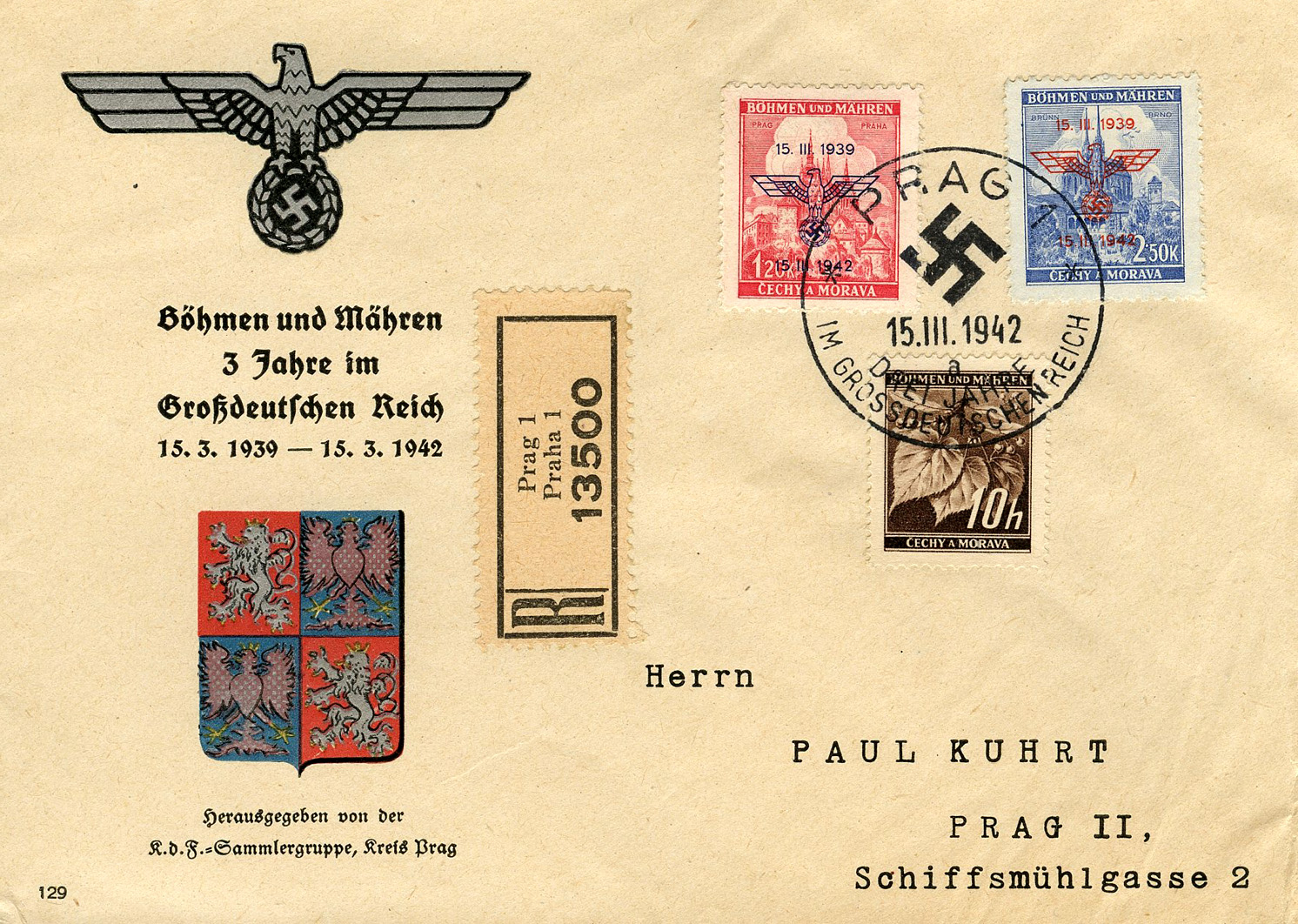
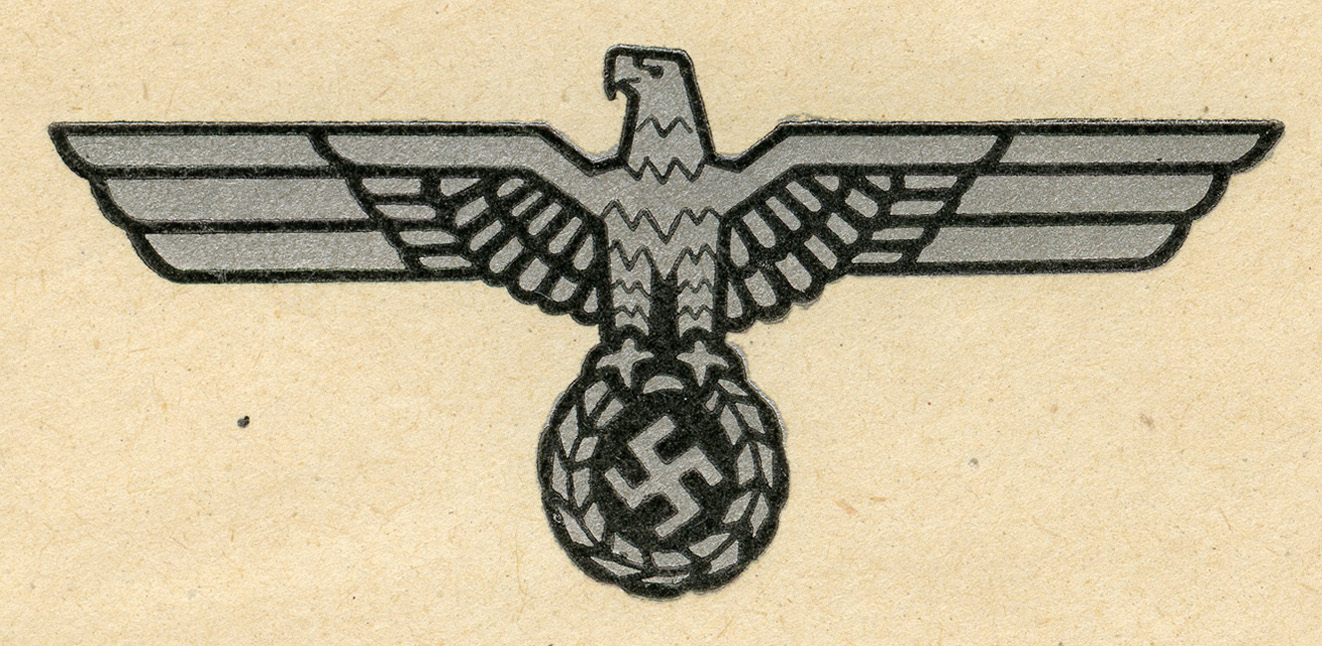
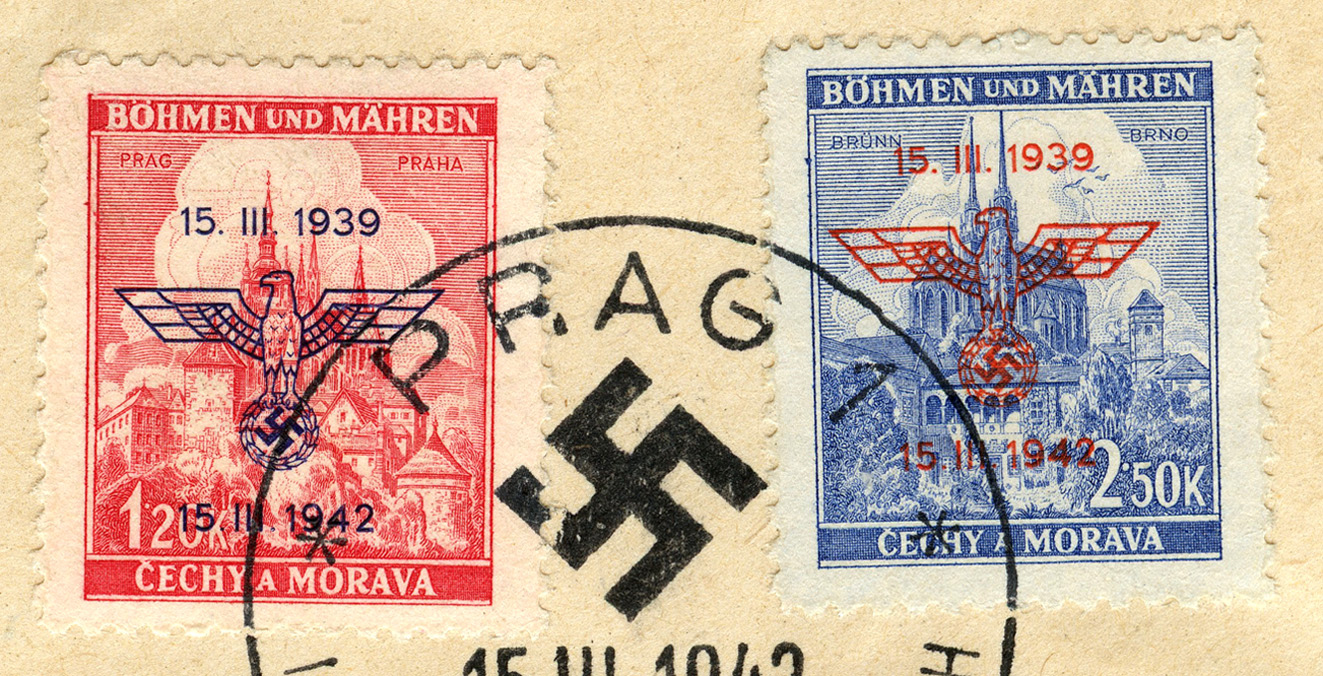
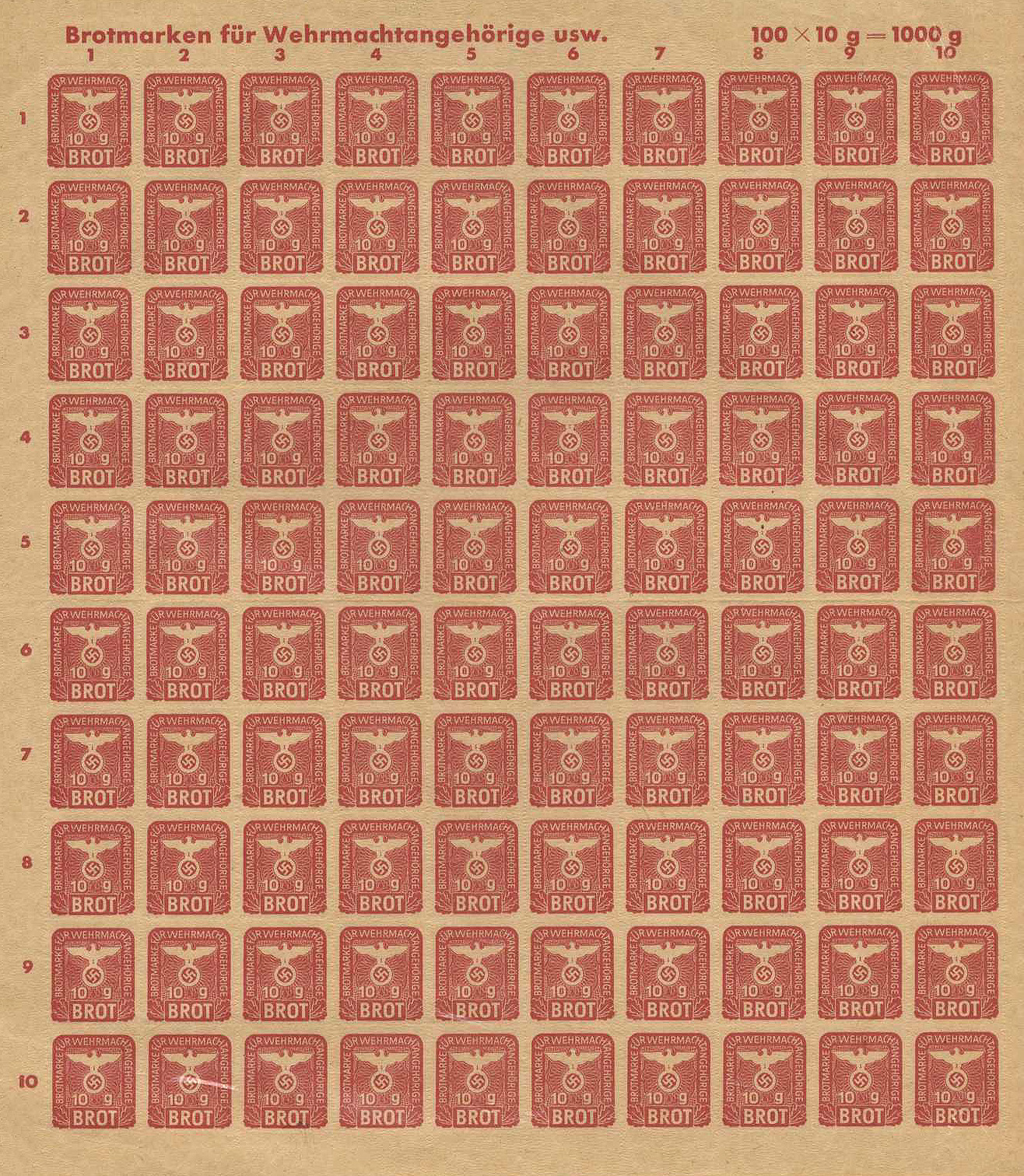
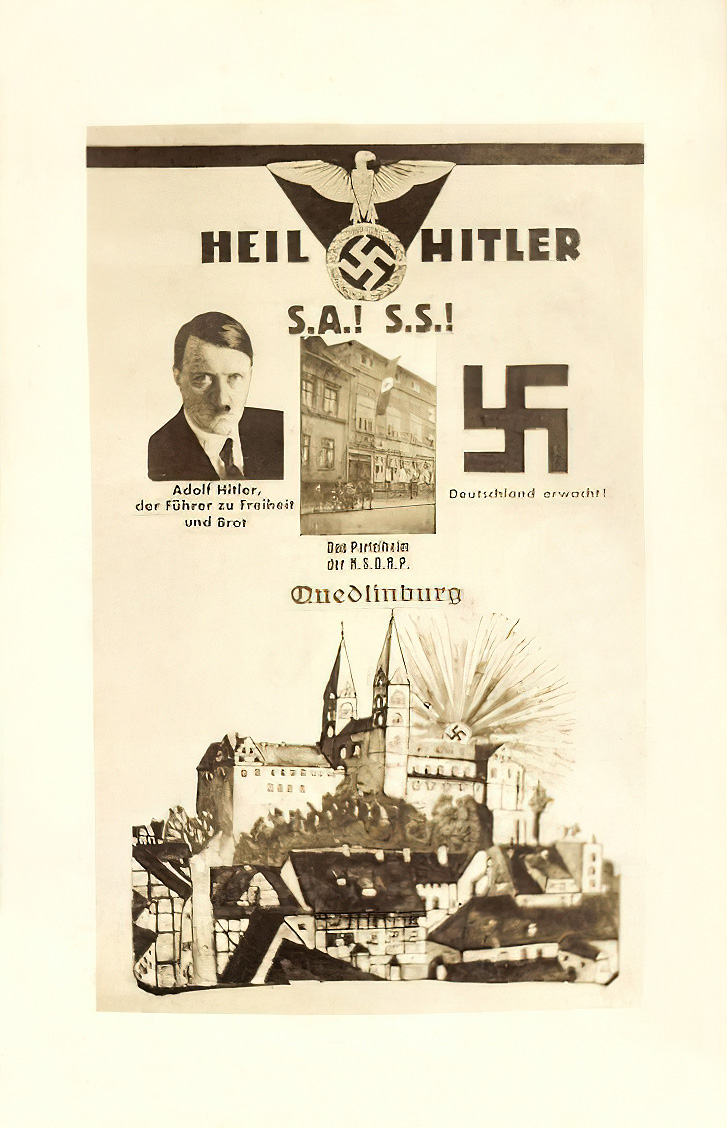
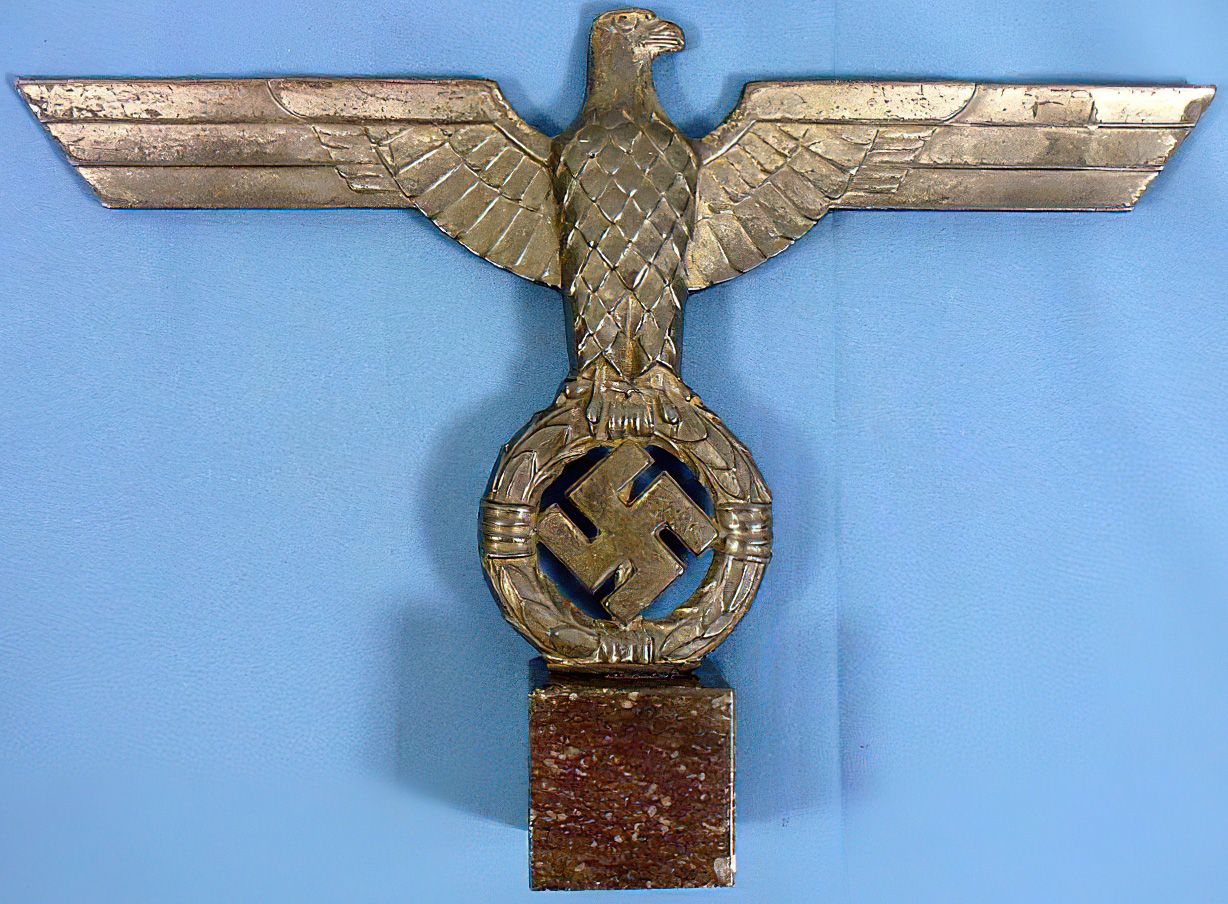


'Ich gab meine Stimme
dem Führer!
Reichstagswahl
29. März 1936'
to the Führer!
Reichstag election
March 29, 1936).]
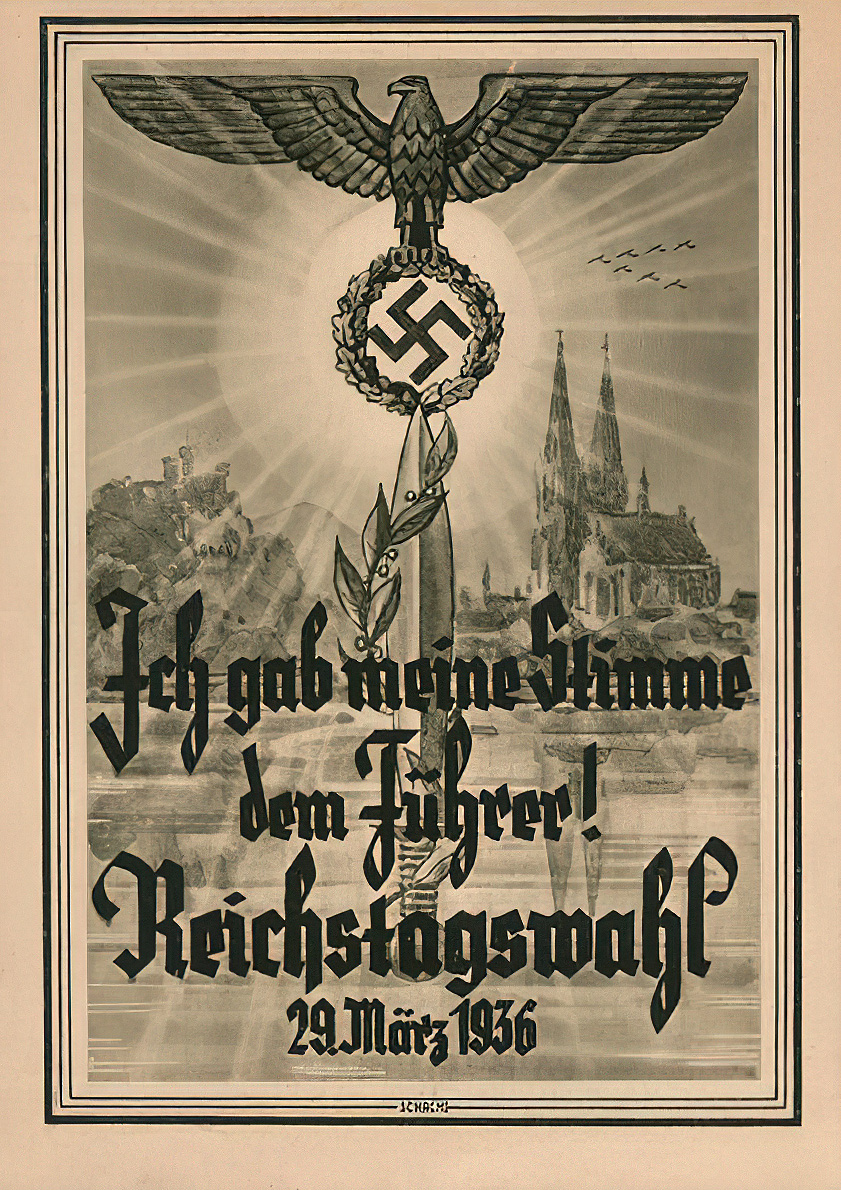
'Gautag der NSDAP
10 Jahre Gau
Ostpreussen
vom 16.-19 Juni 1938'
10 years Gau
East Prussia
from June 16th to 19th, 1938).]

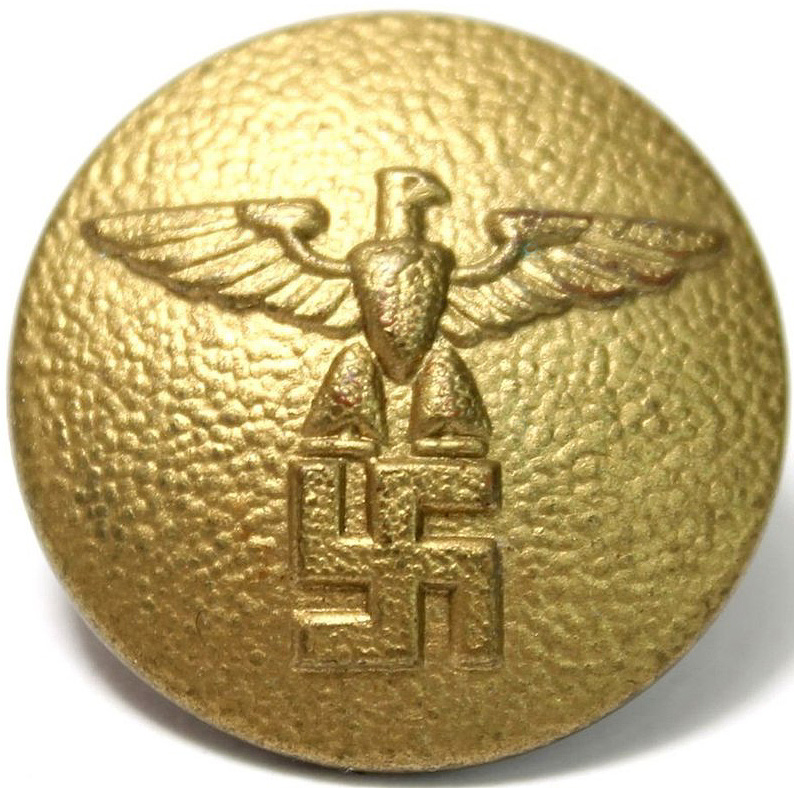
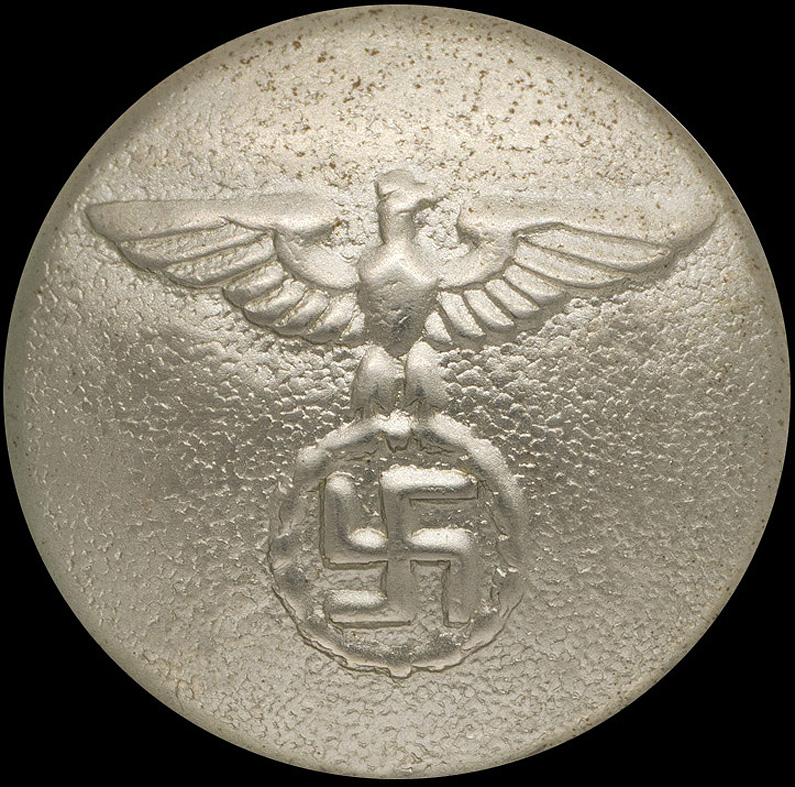
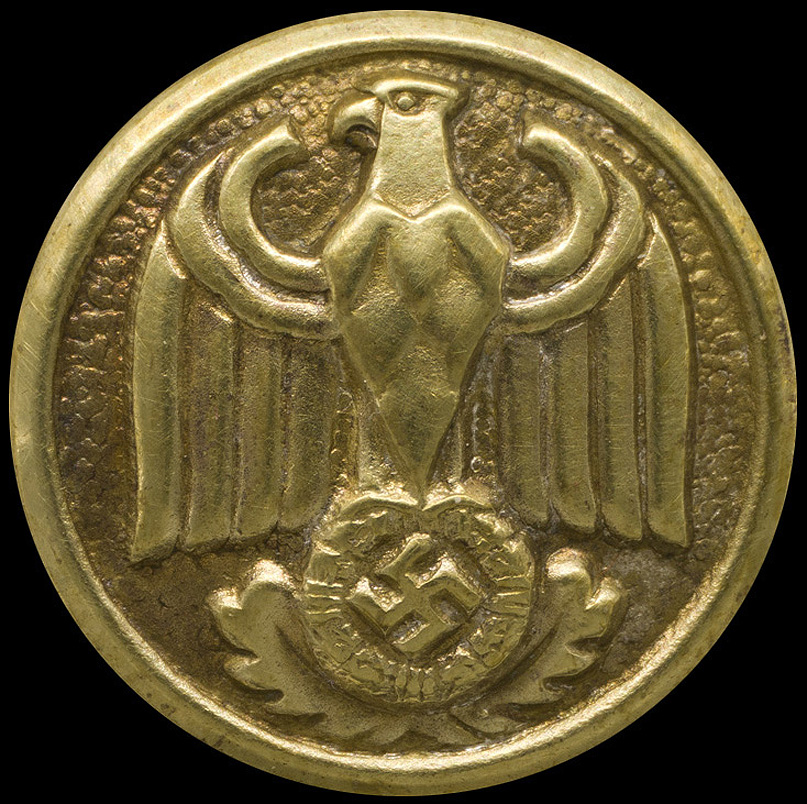
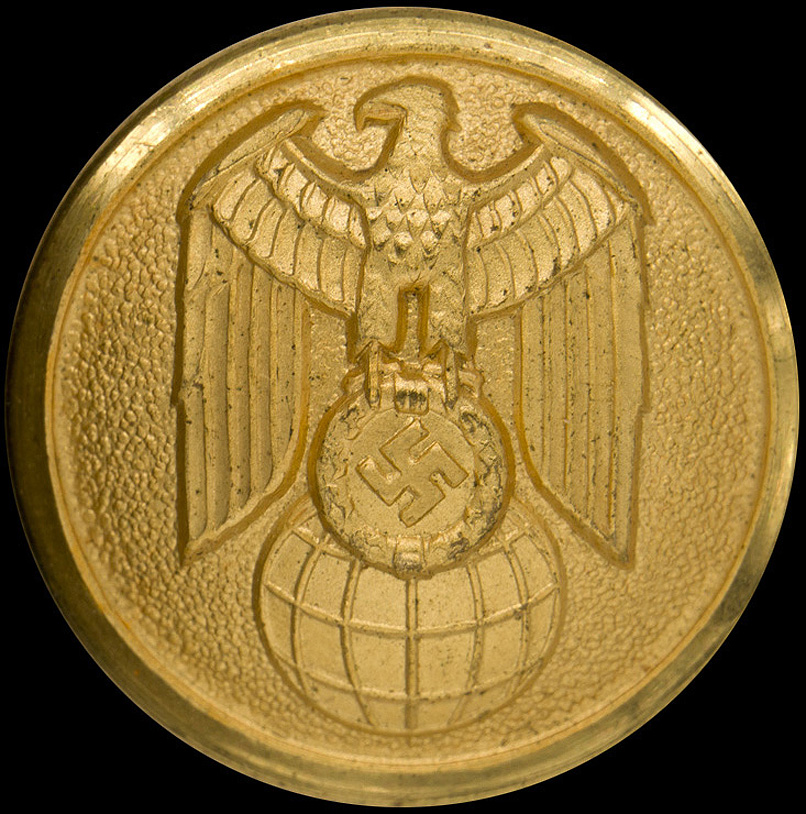
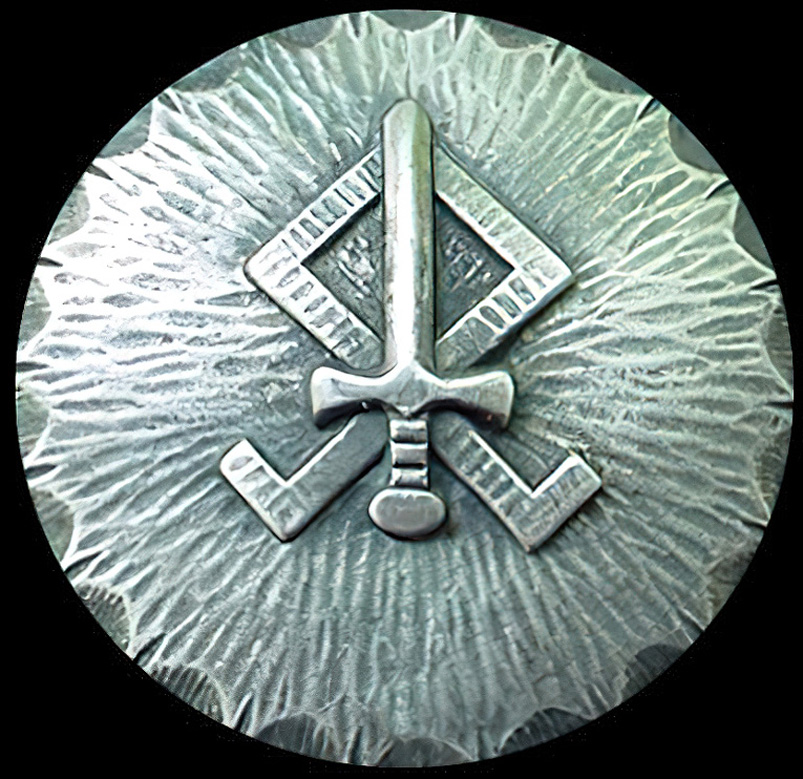
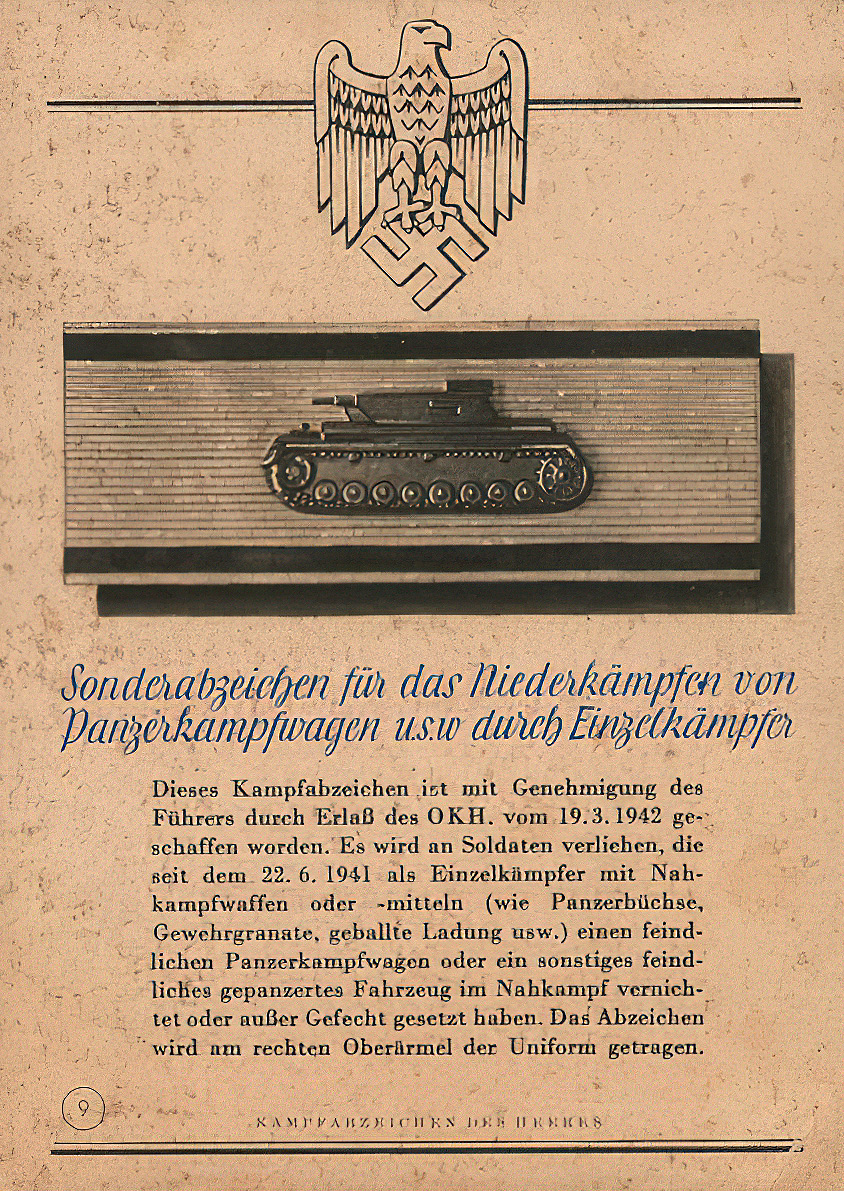


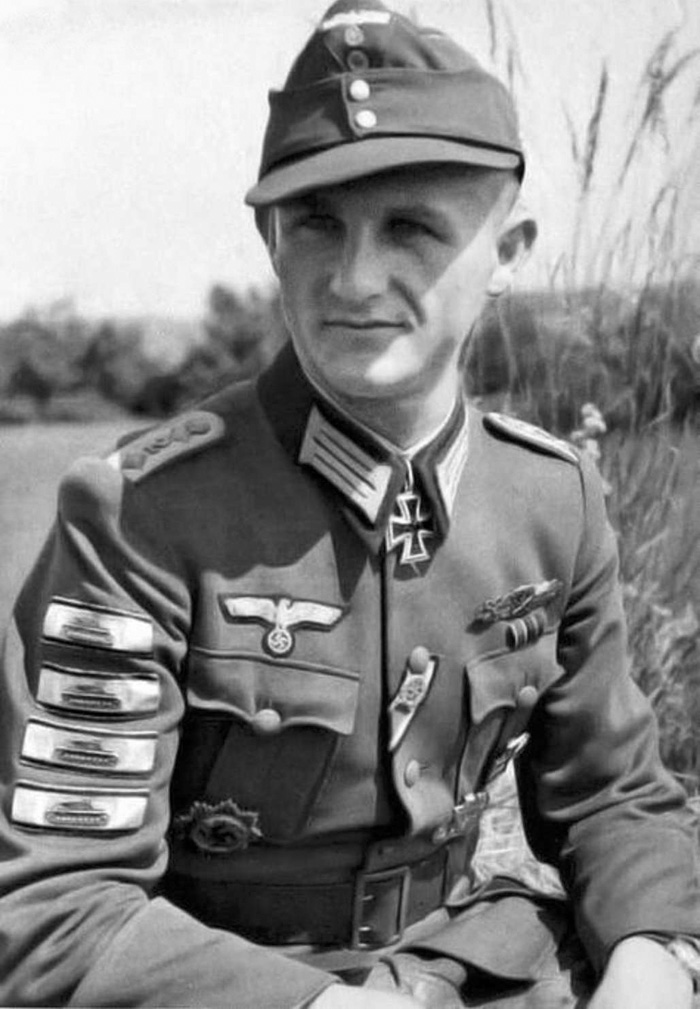


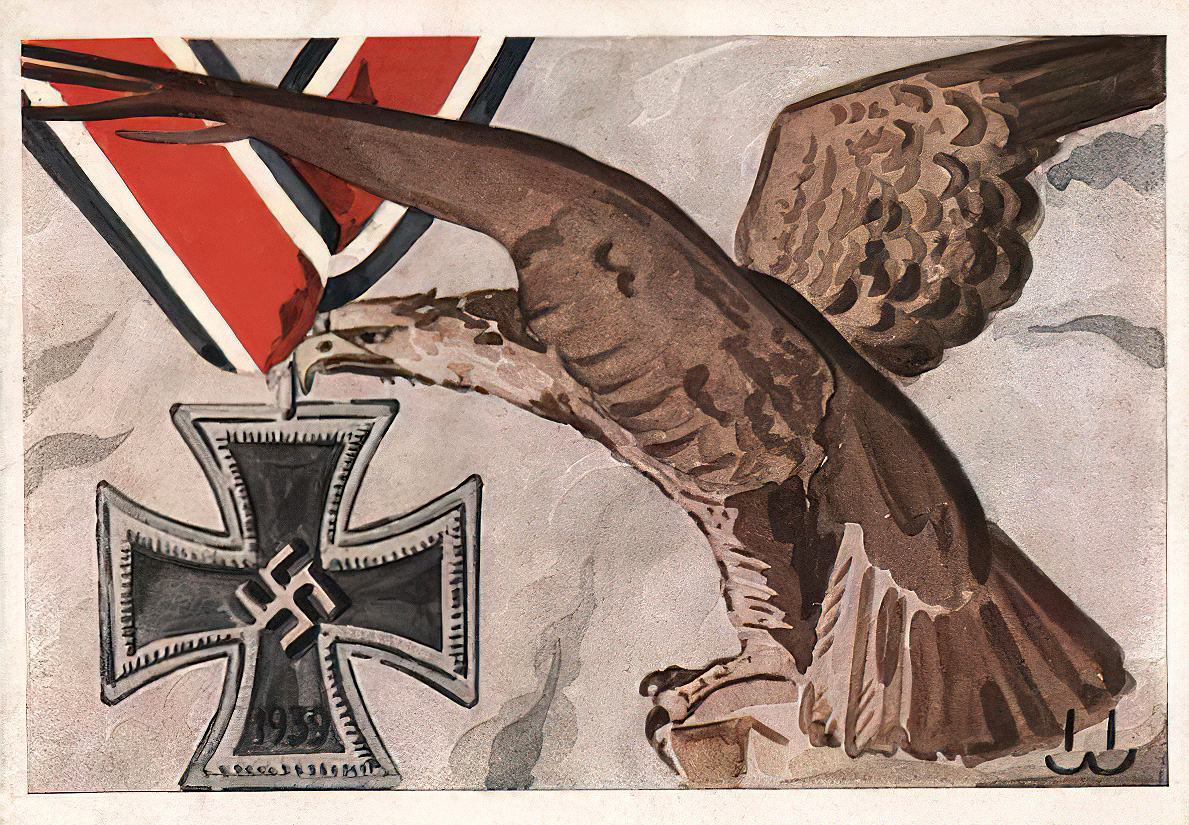
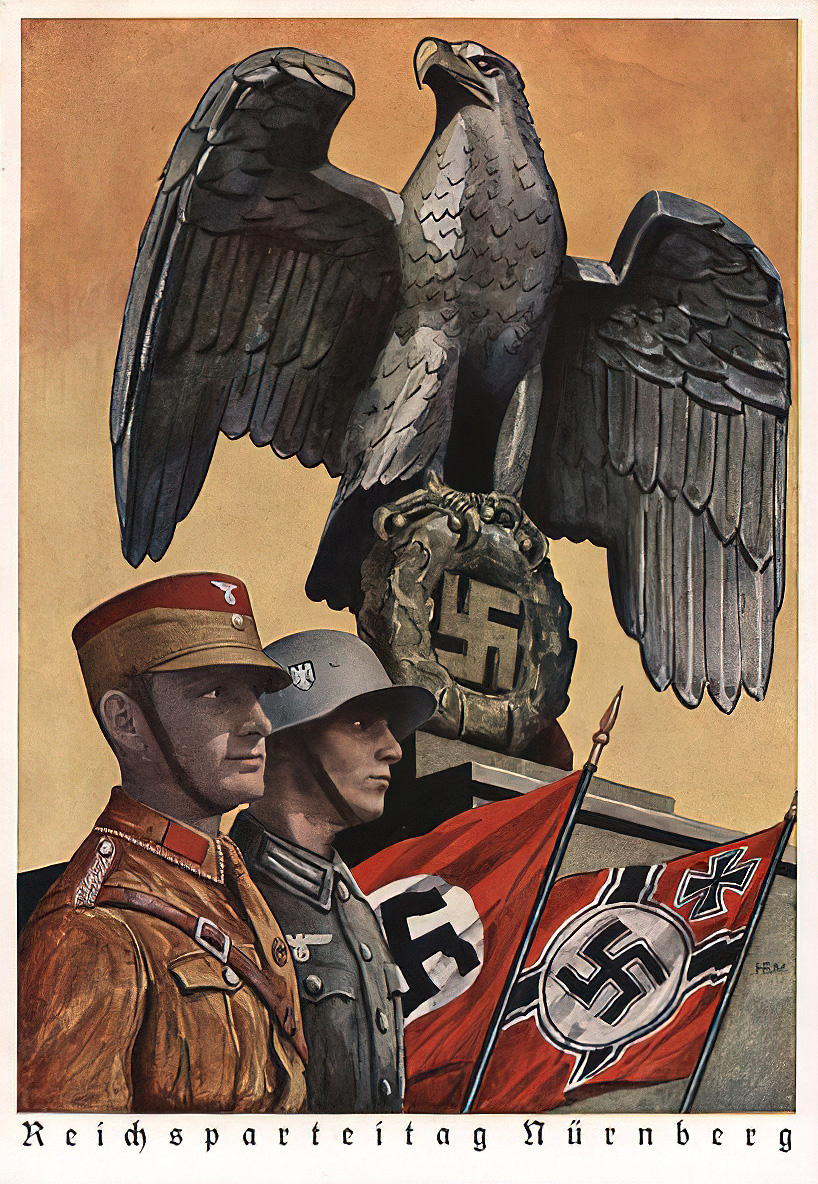
des Großdeutschen Reiches
Chef des Ministeramtes
Gründen der Zuständigkeit an das Amt Z.A.-R. des
Reichsluftfahrtministeriums, Berlin W 8, Lepziger Straße 7,
weitergeleitet worden
I.A.'
of the Greater German Reich
Chief of the Minister's Office
Office of the Reich Aviation Ministry, Berlin W 8, Lepziger
Strasse 7.
I.A.)
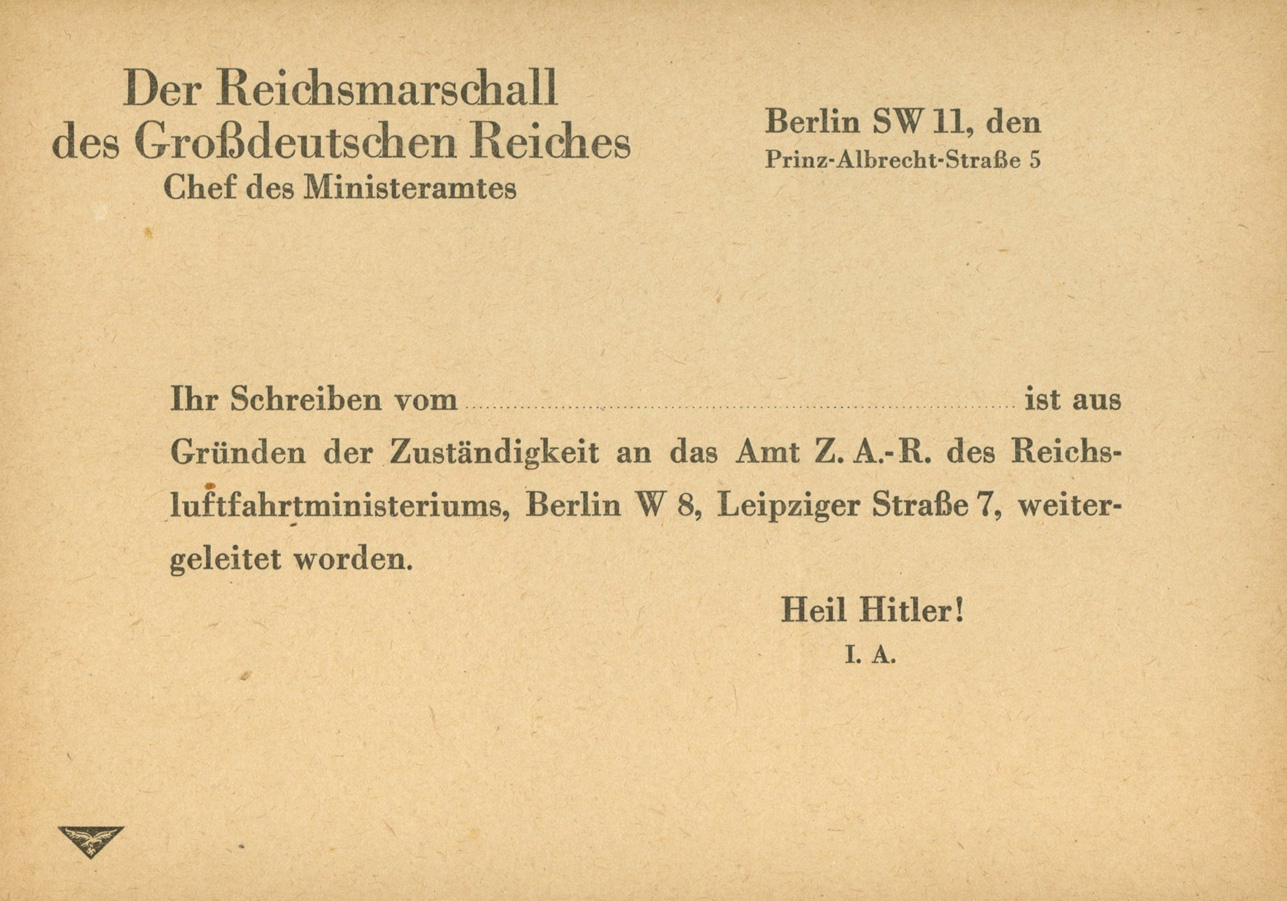

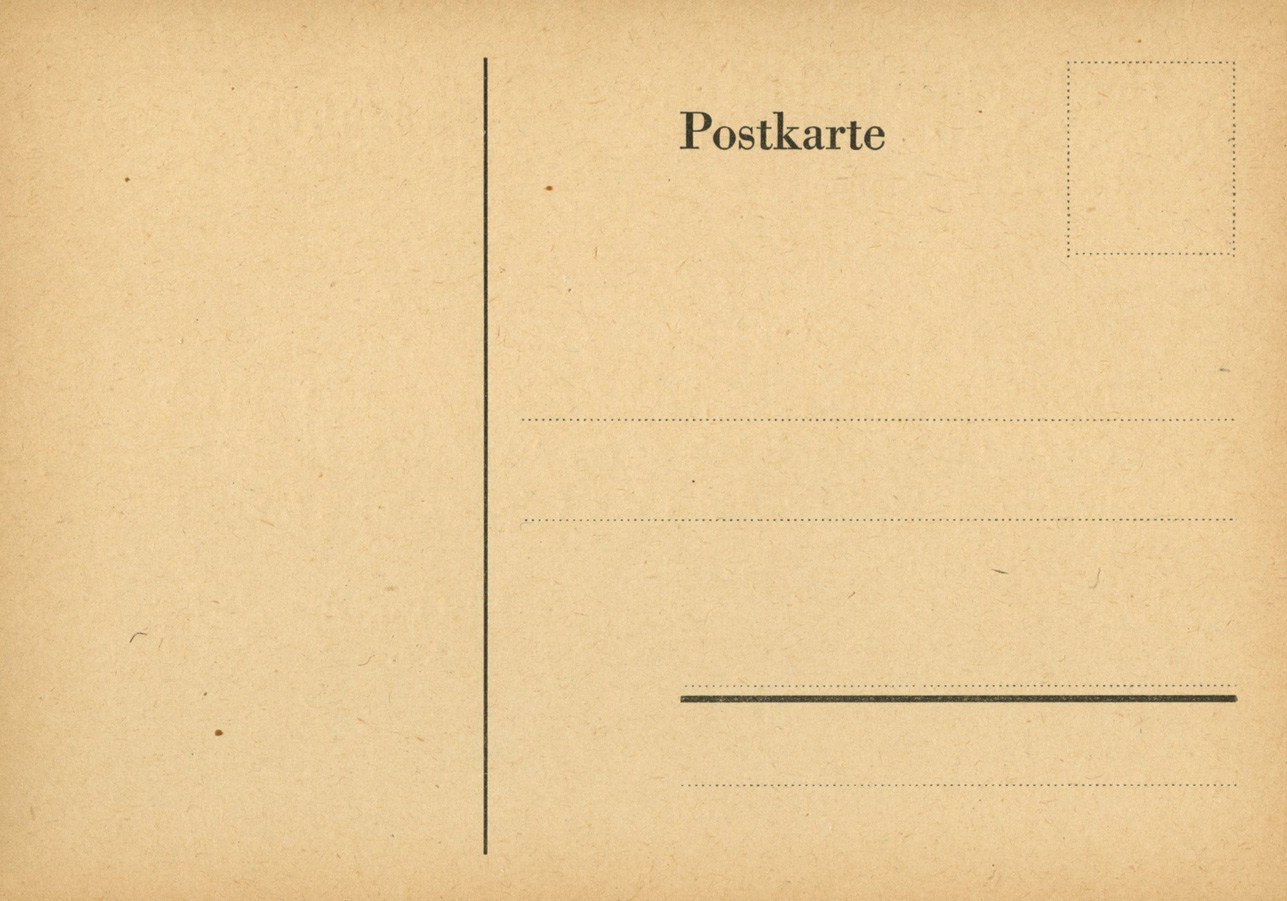
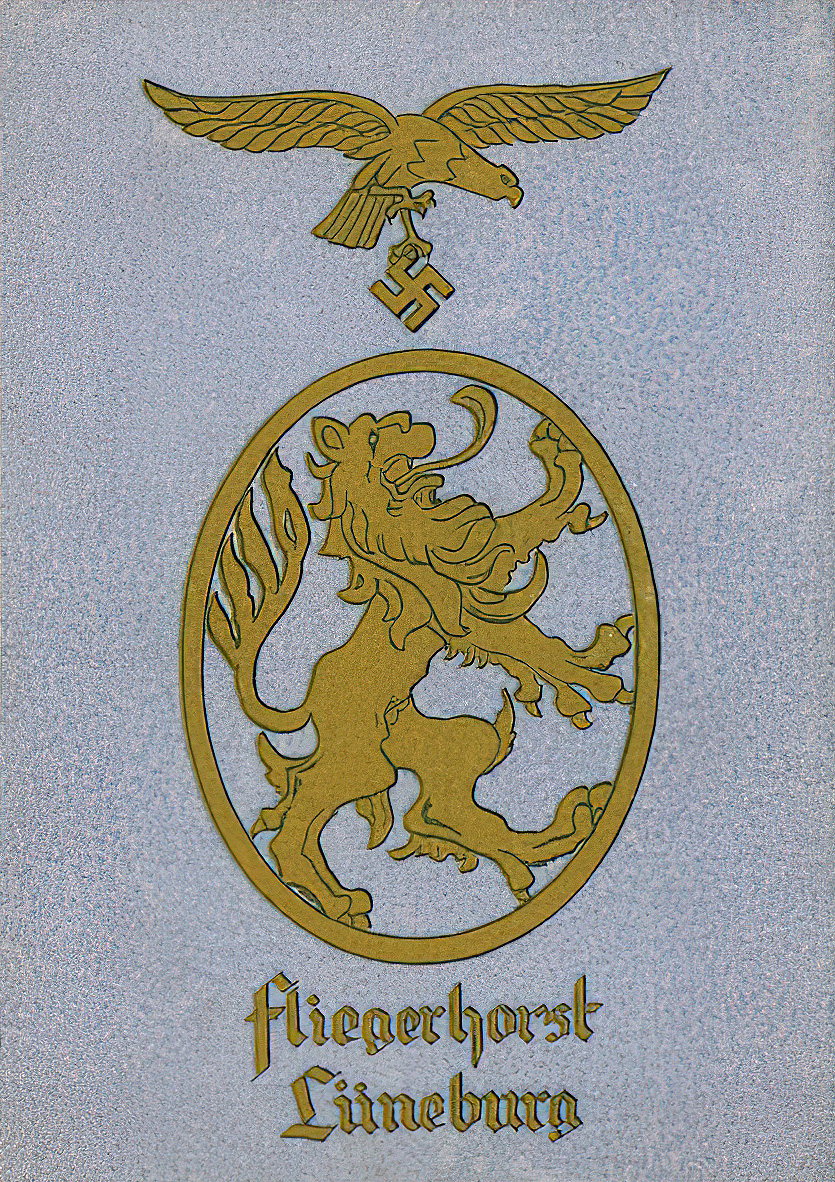
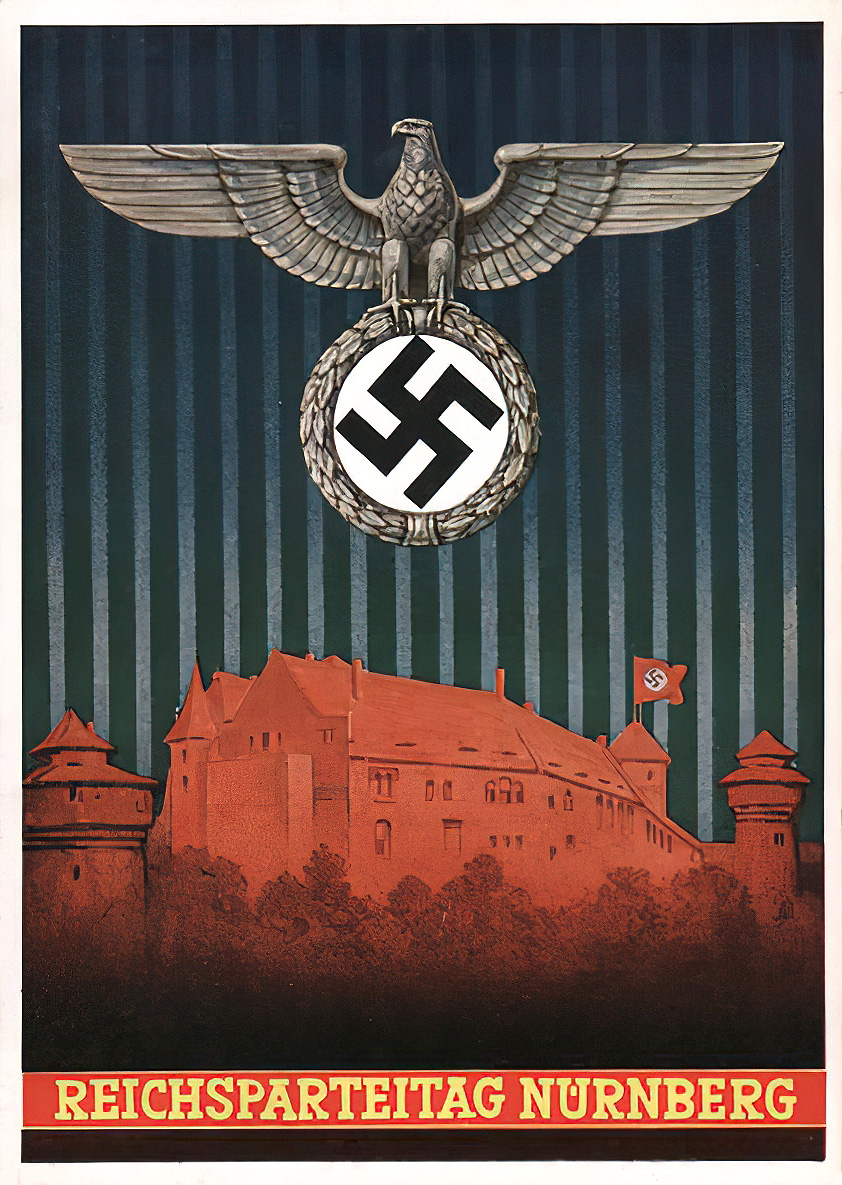

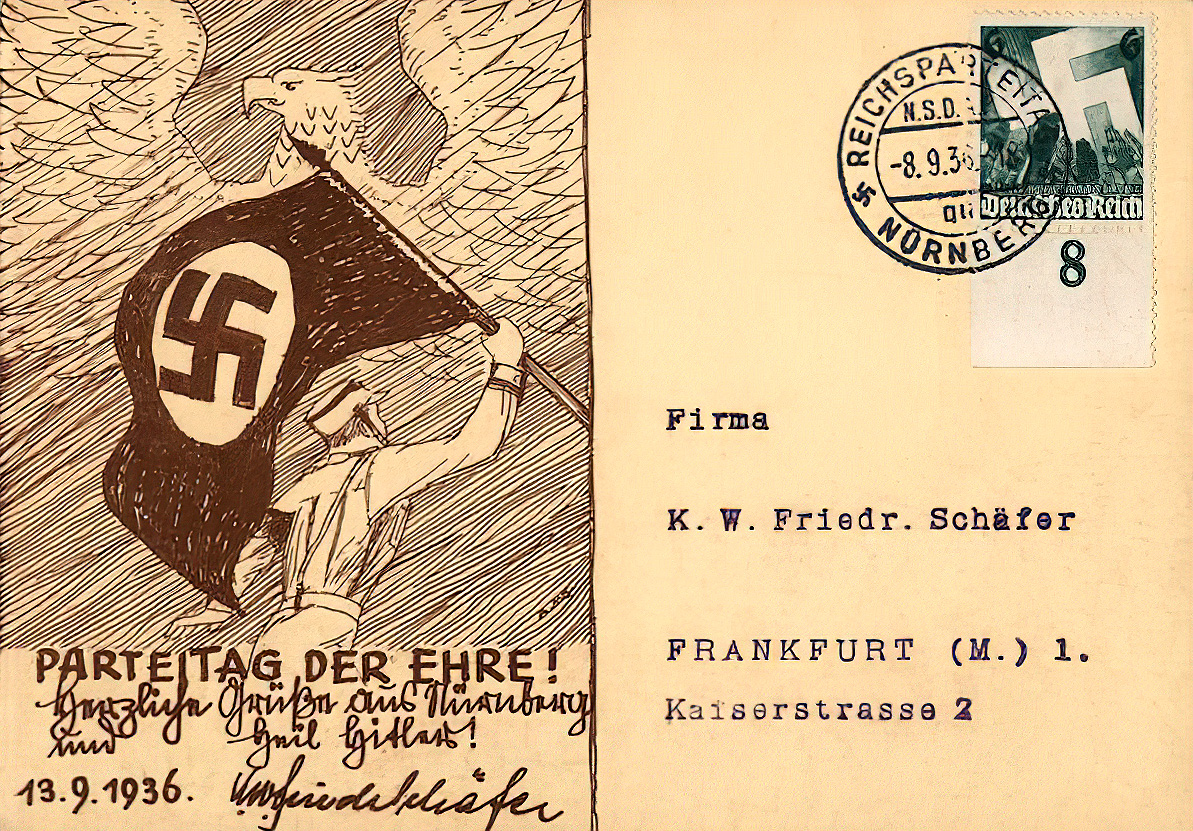
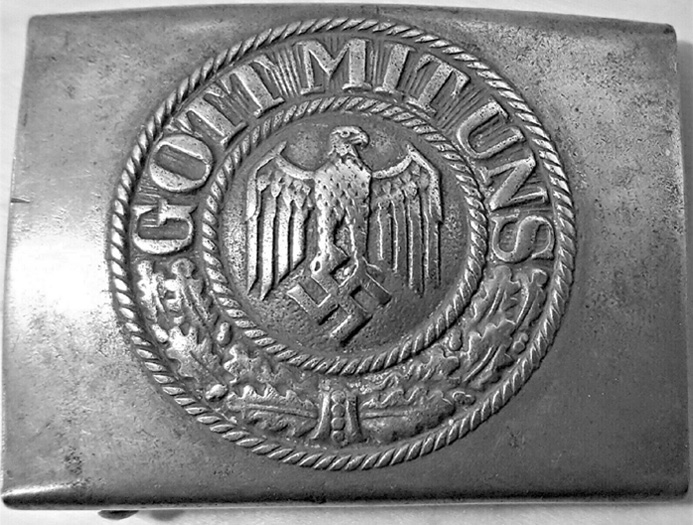
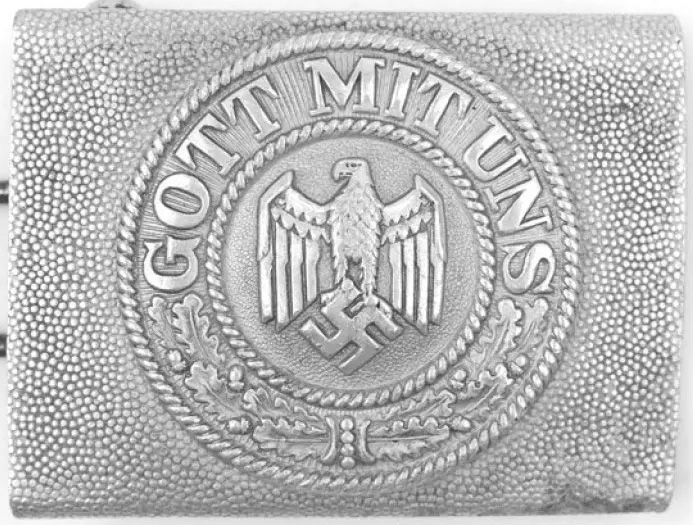
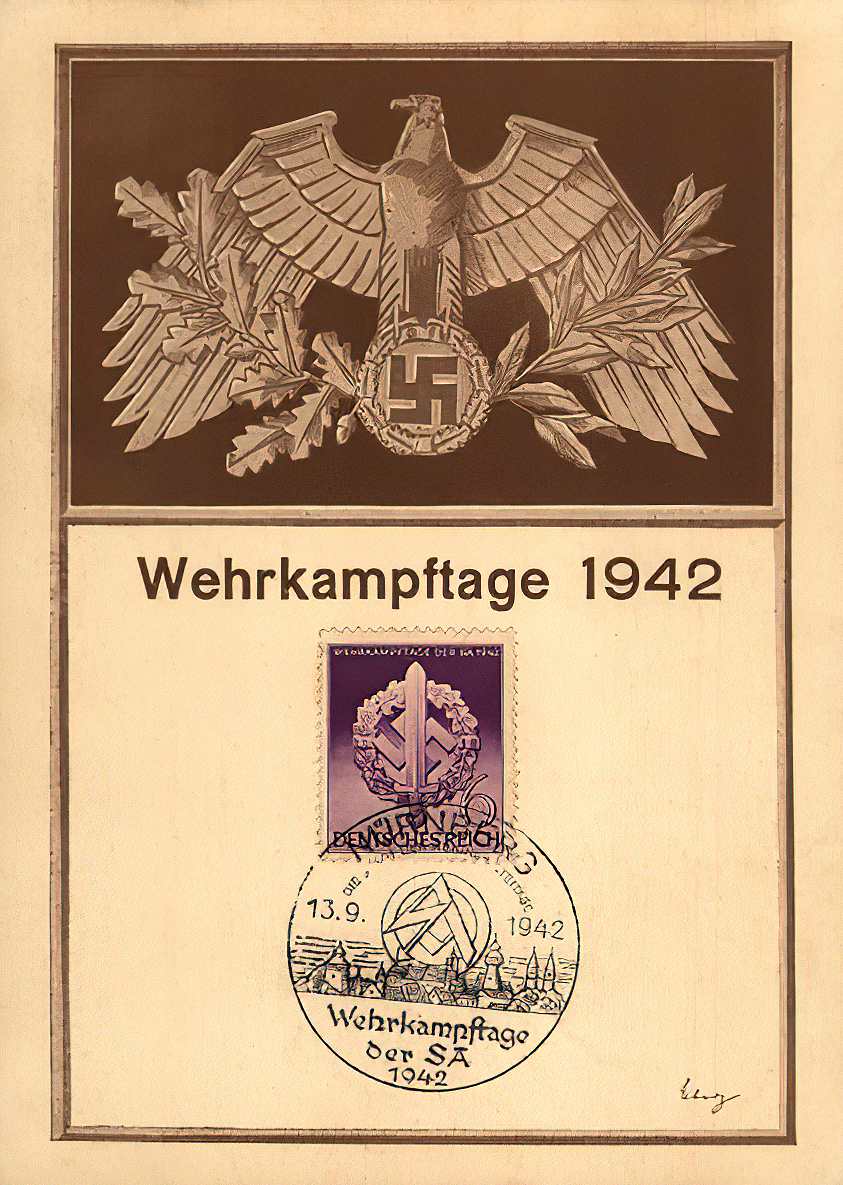
'Gau=Kultur=Woche
1937
Rhein Main
Heffen=Nassau'
1937
Rhein Main
Heffen=Nassau).]
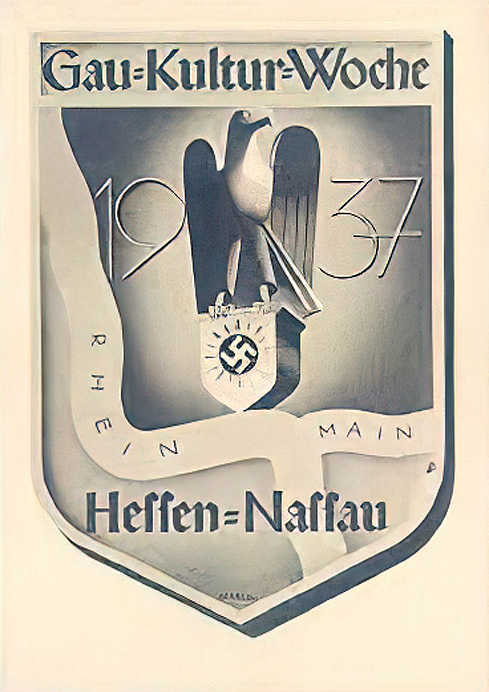

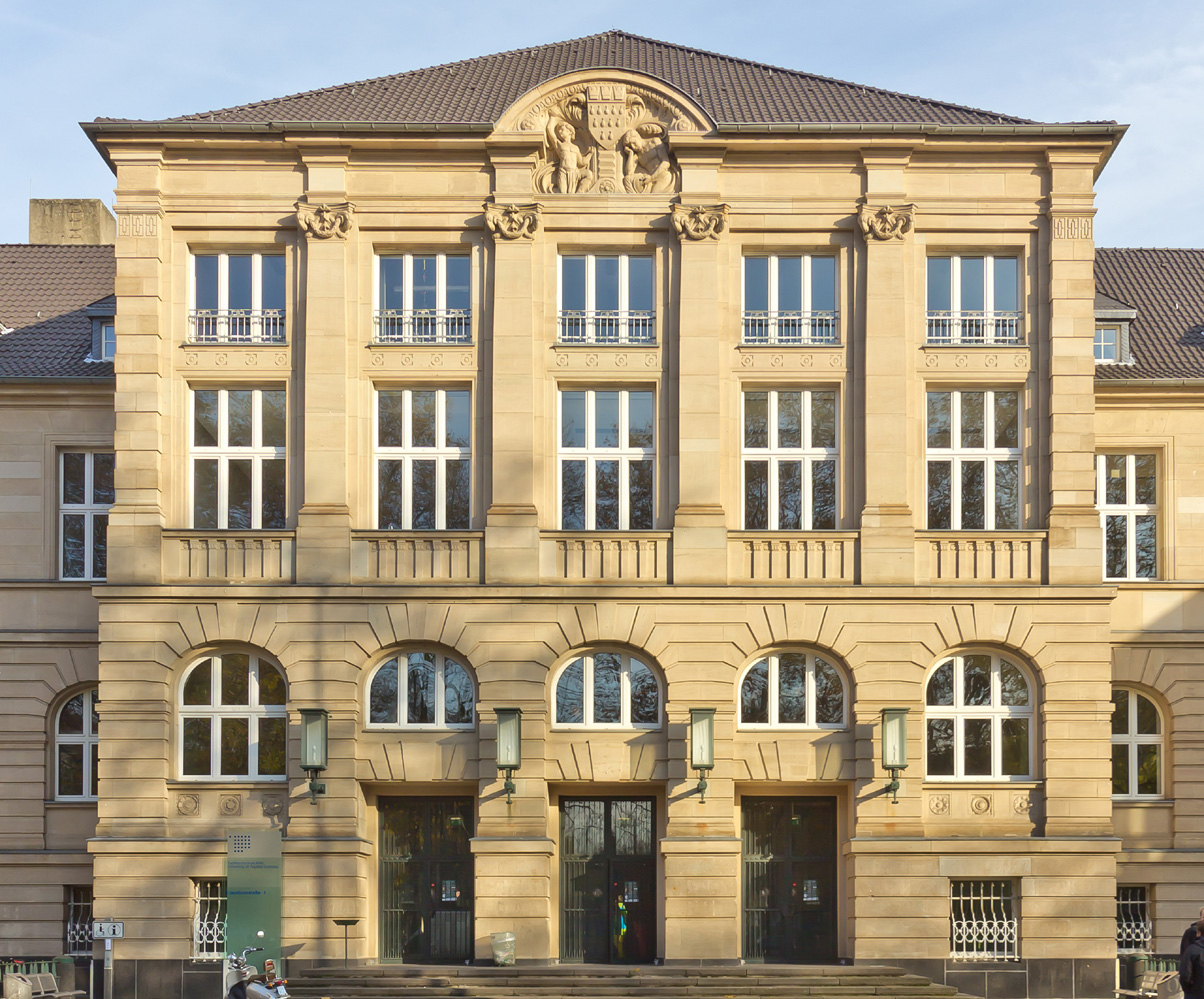
'...lager Sachsenhausen
Post Oranienburg
Kommandantur'
Post Office Oranienburg
Commandant's Office).]
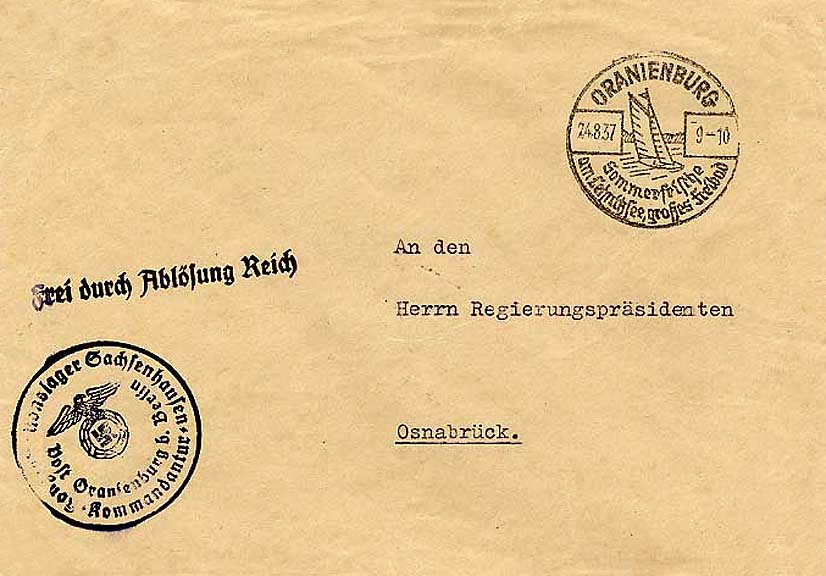
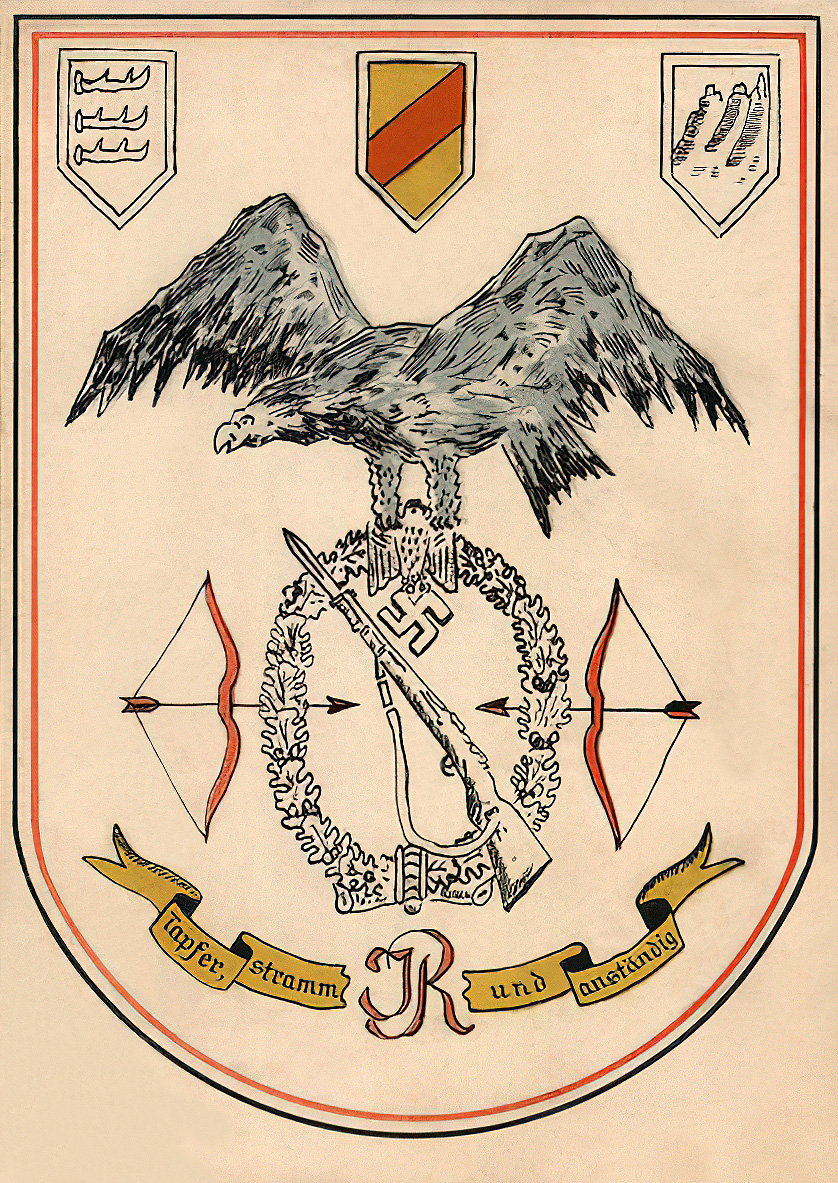
Nationalsozialistischer
Reichsjugendtag
Potsdam 1 u. 2 Oktbr'
National Socialist
Reich Youth Day
Potsdam 1 and 2 October).]
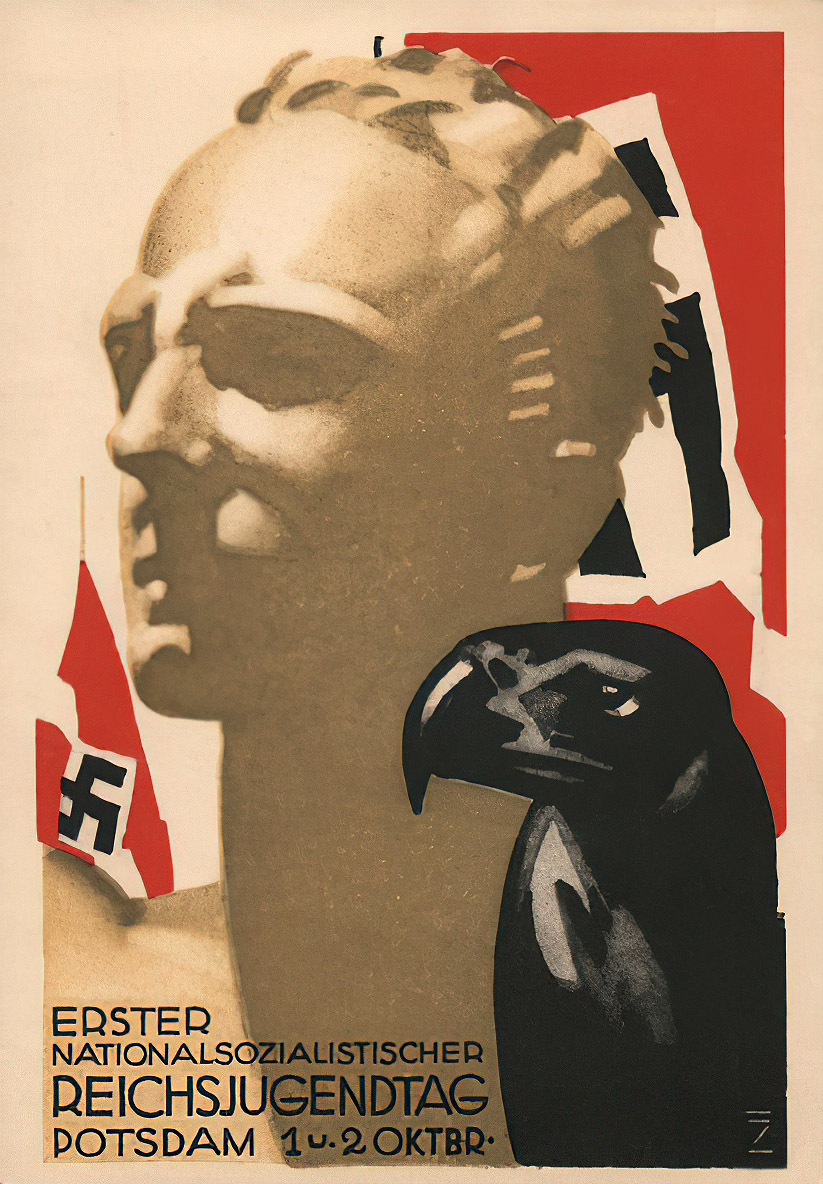
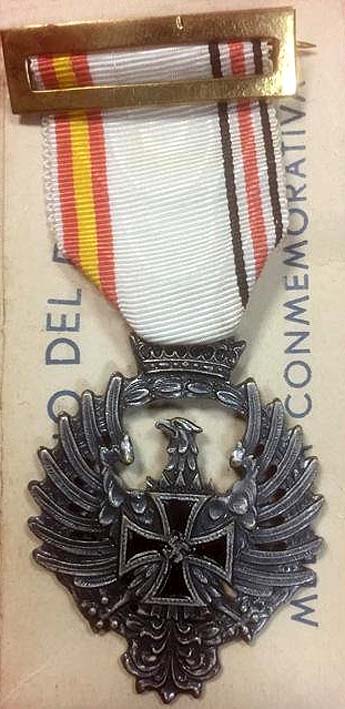

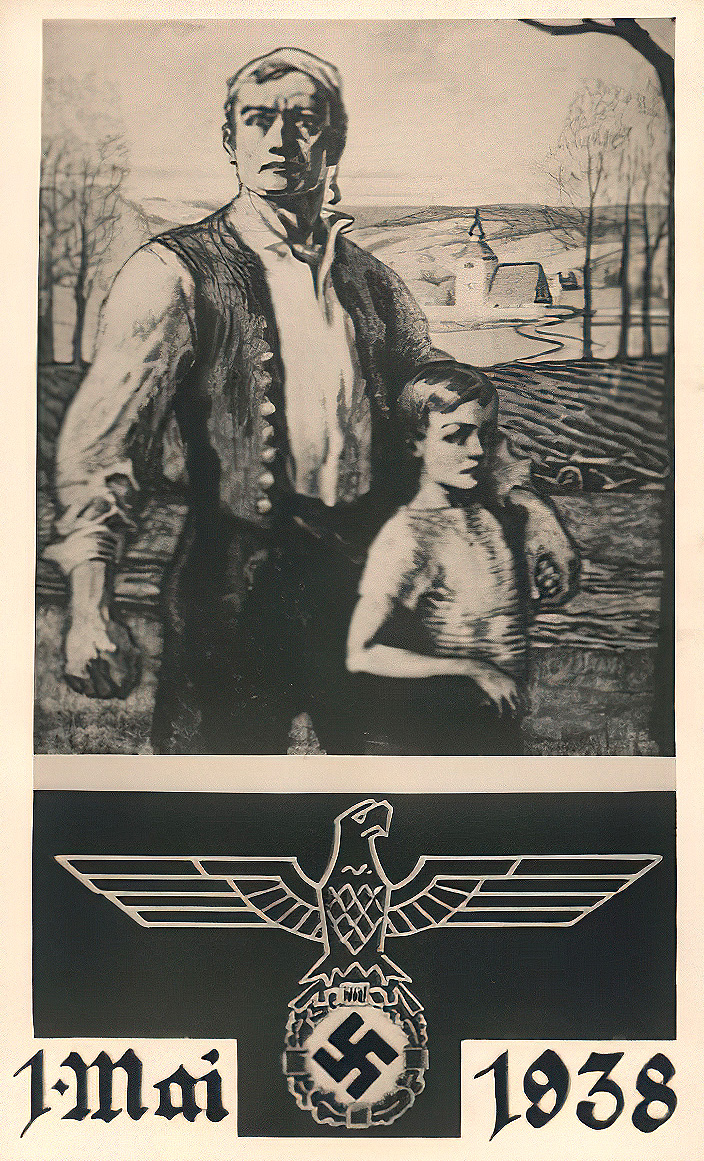
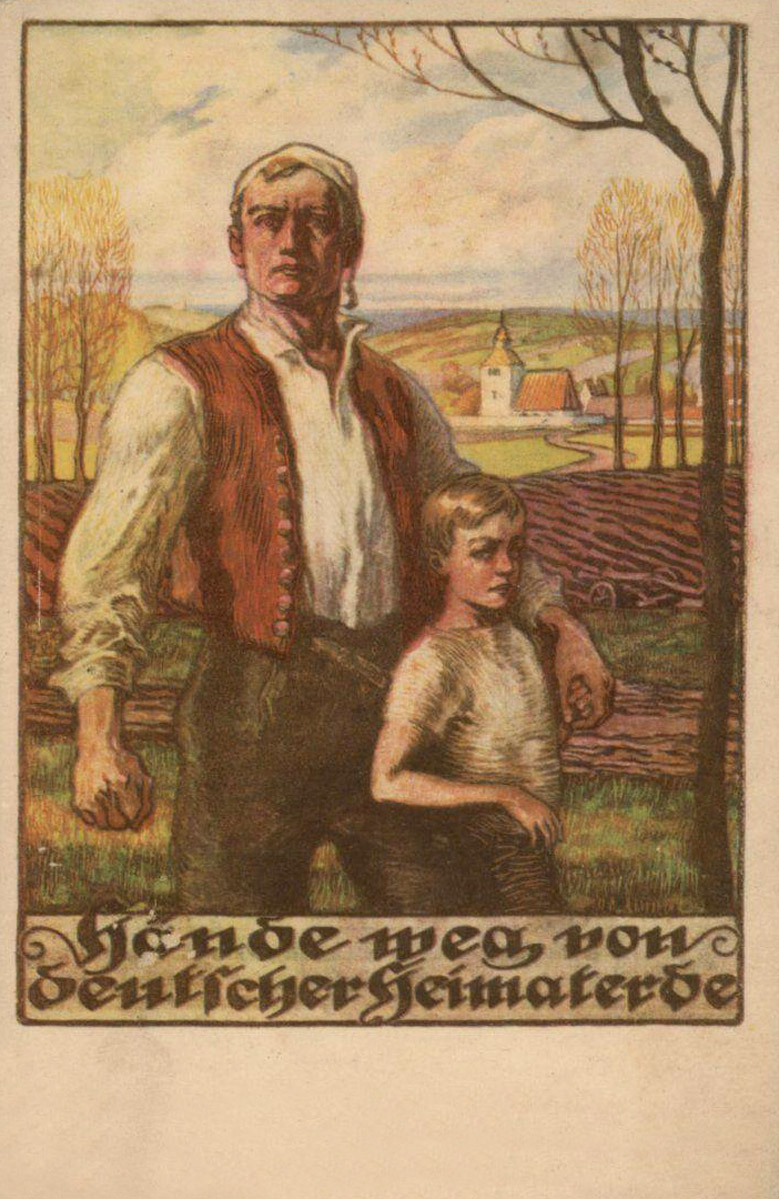
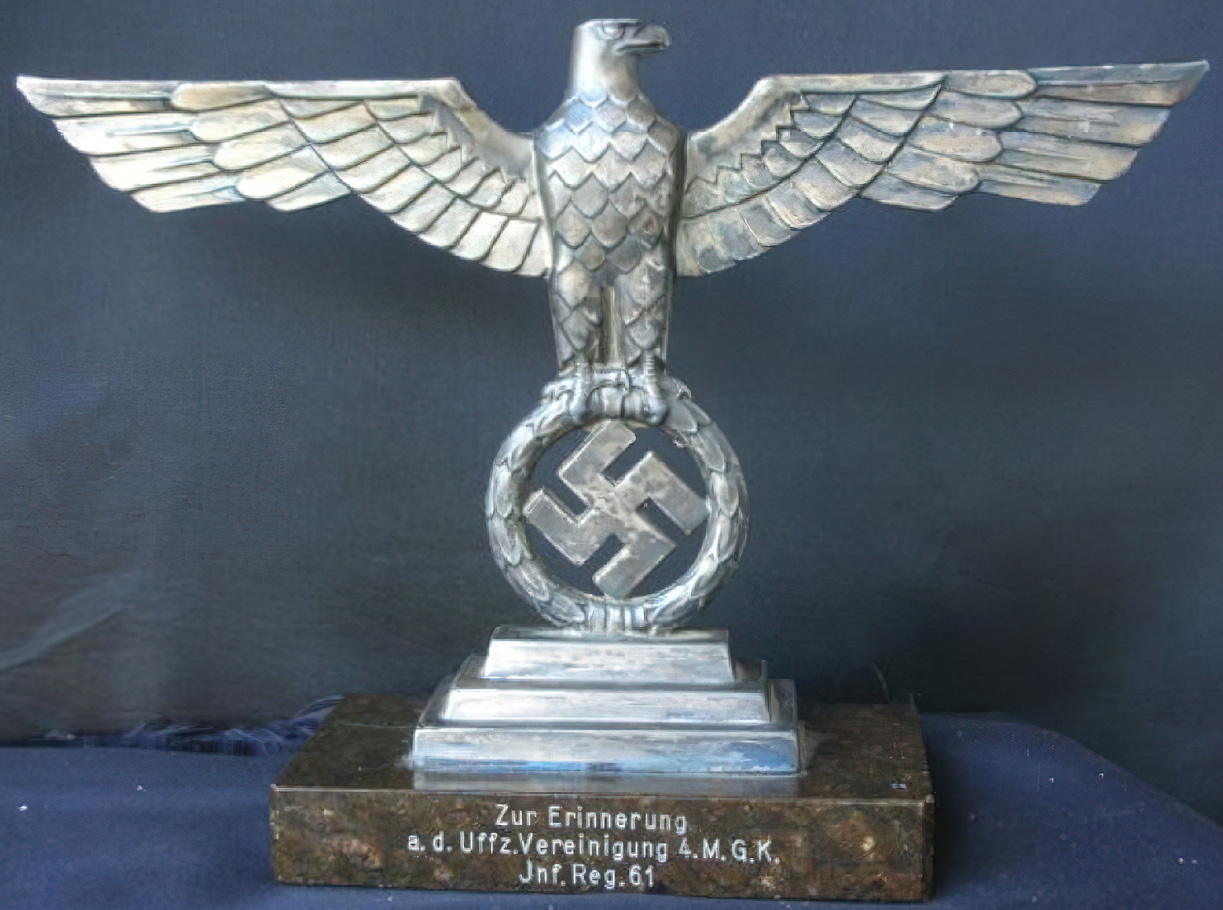
'O Heilig Herz
der Völker,
O Vaterland!
VI. Reichstagung
der Auslandsdeutschen
1938
Stuttgart
20. Aug. - 4. Sept.'
Stuttgart
Aug. 20 - Sept. 4).]

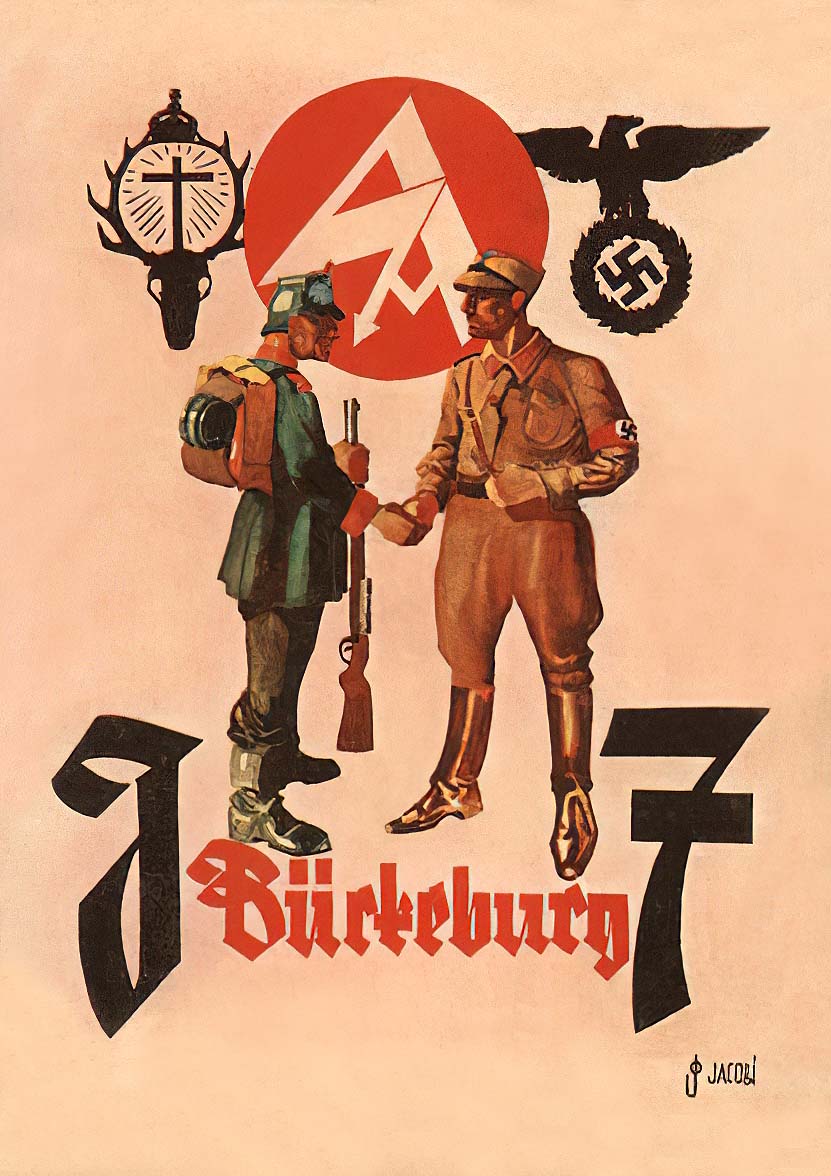
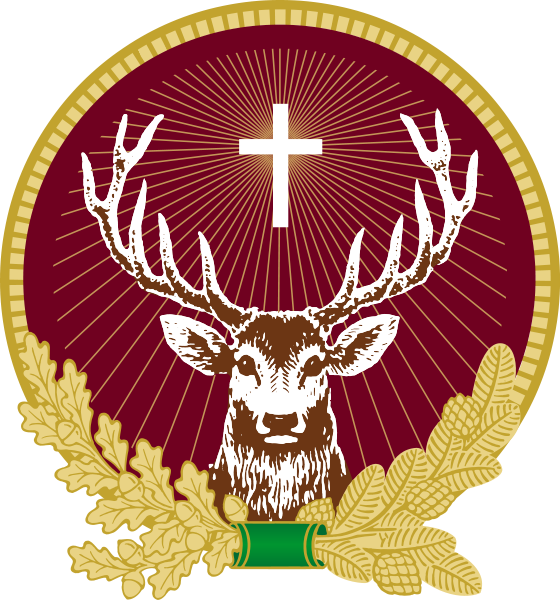
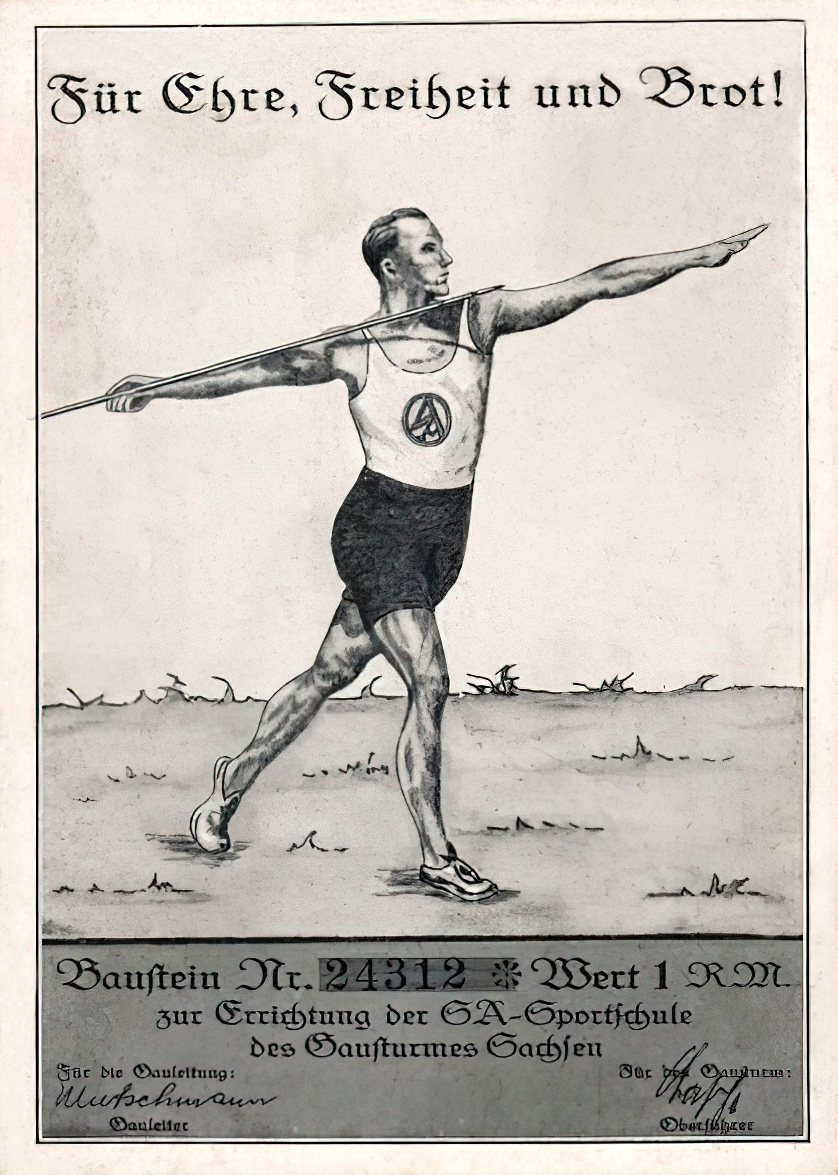

Deutsche u. frei
Untergruppe Alpenland West'
German & Free
Subgroup Alpine Country West).]

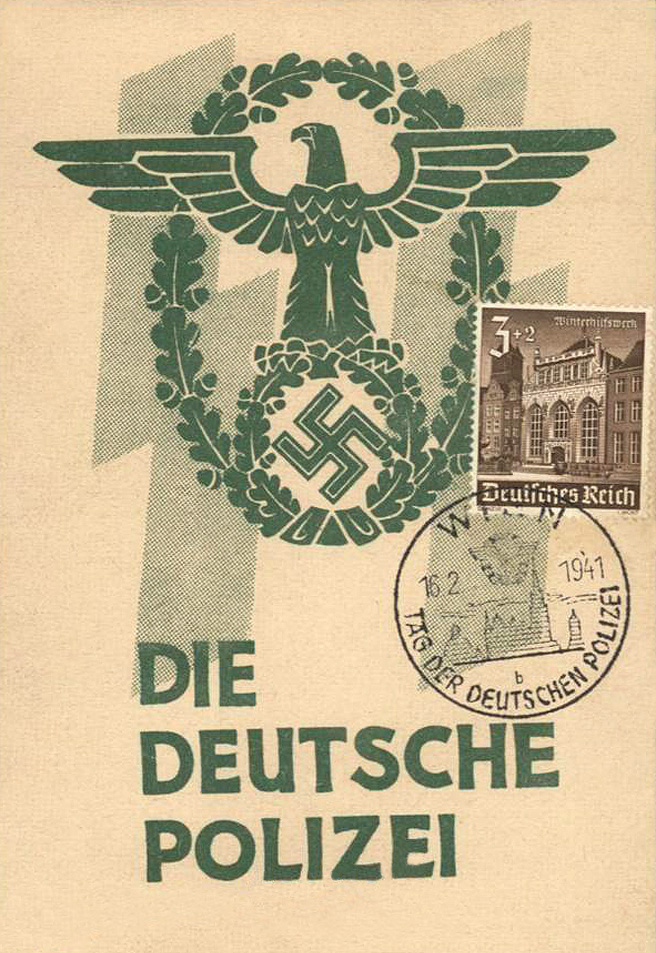
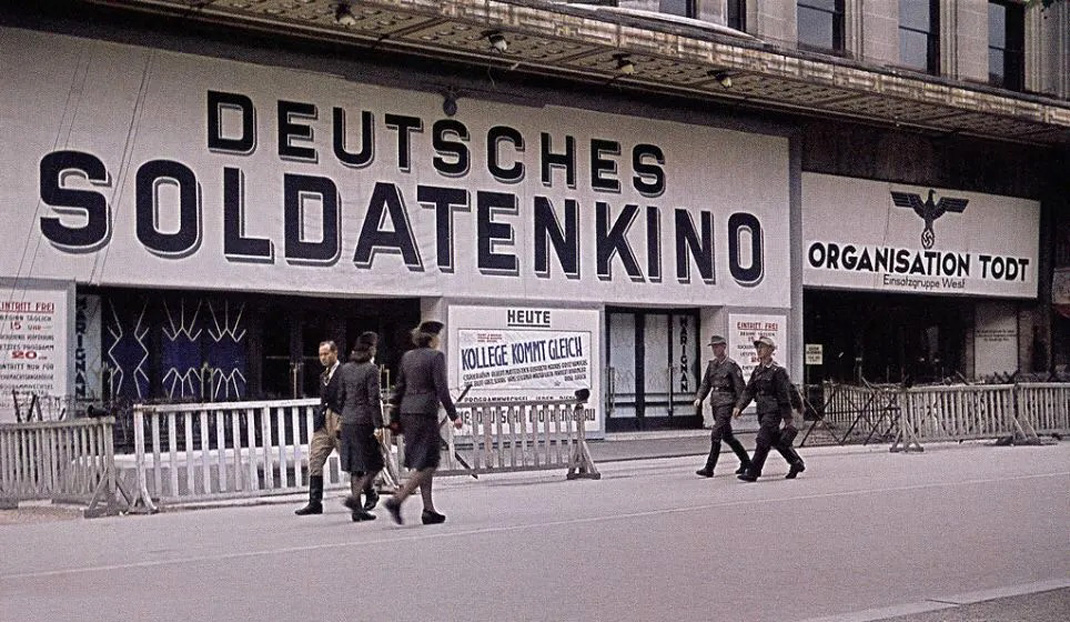
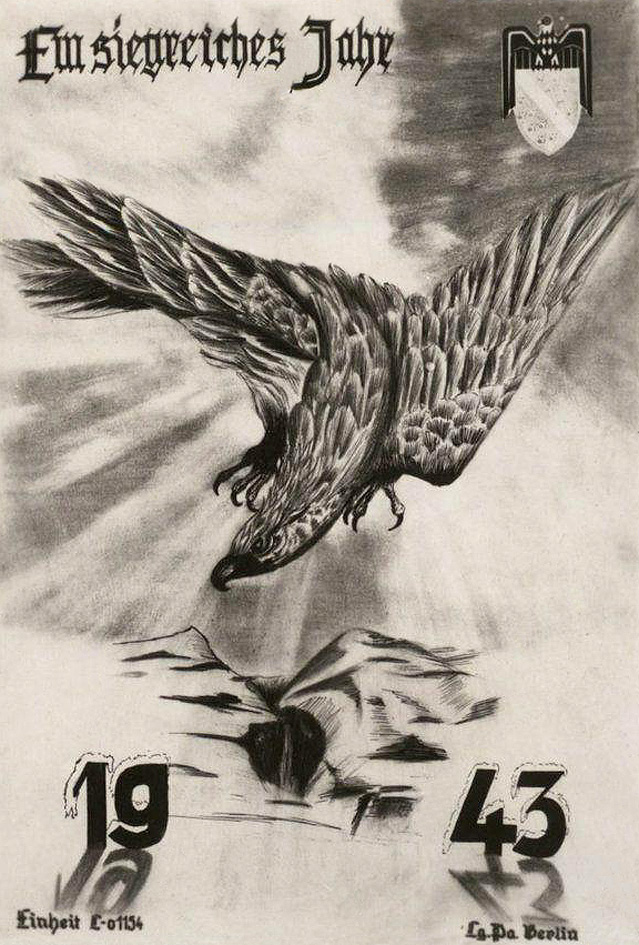
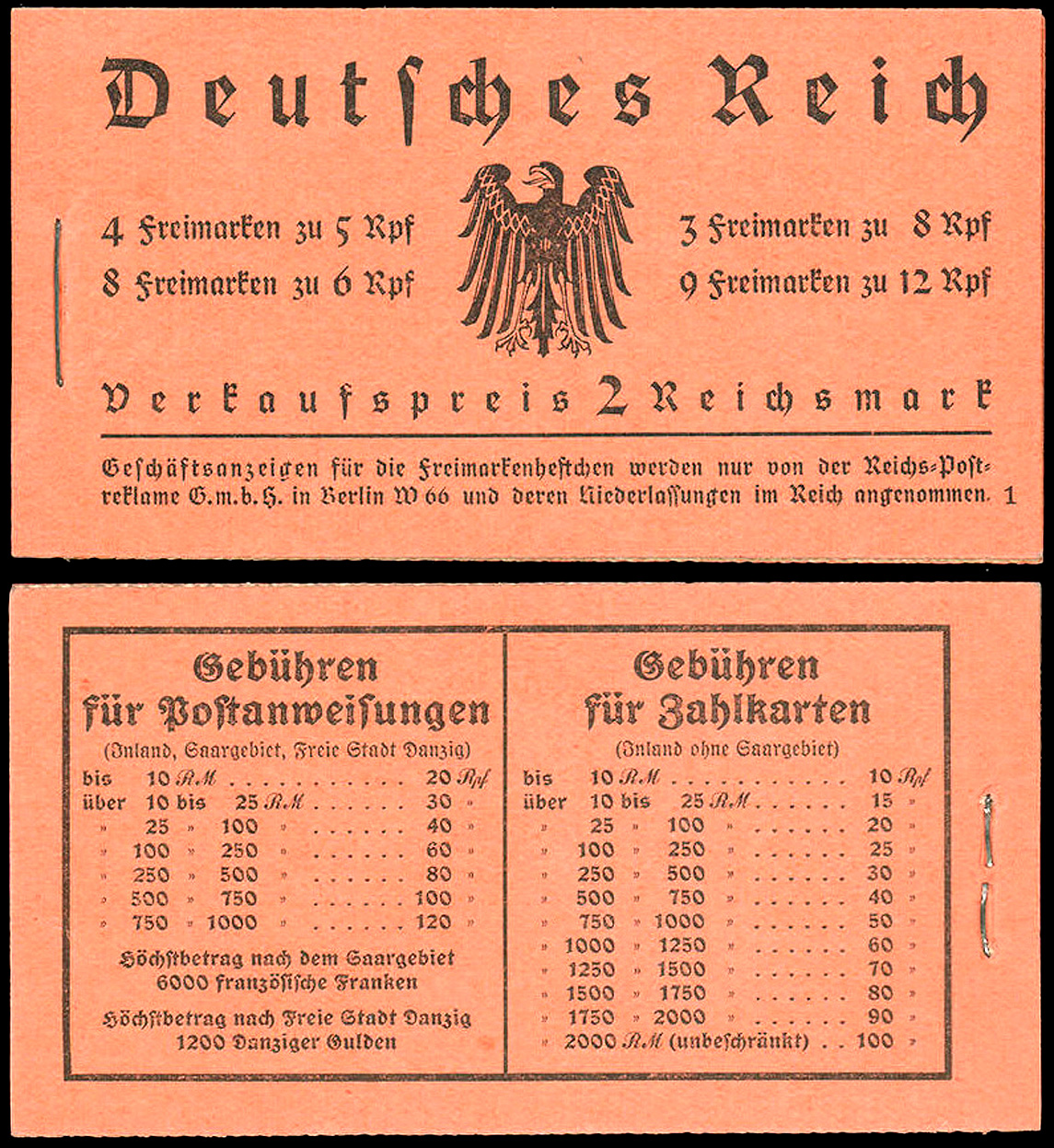
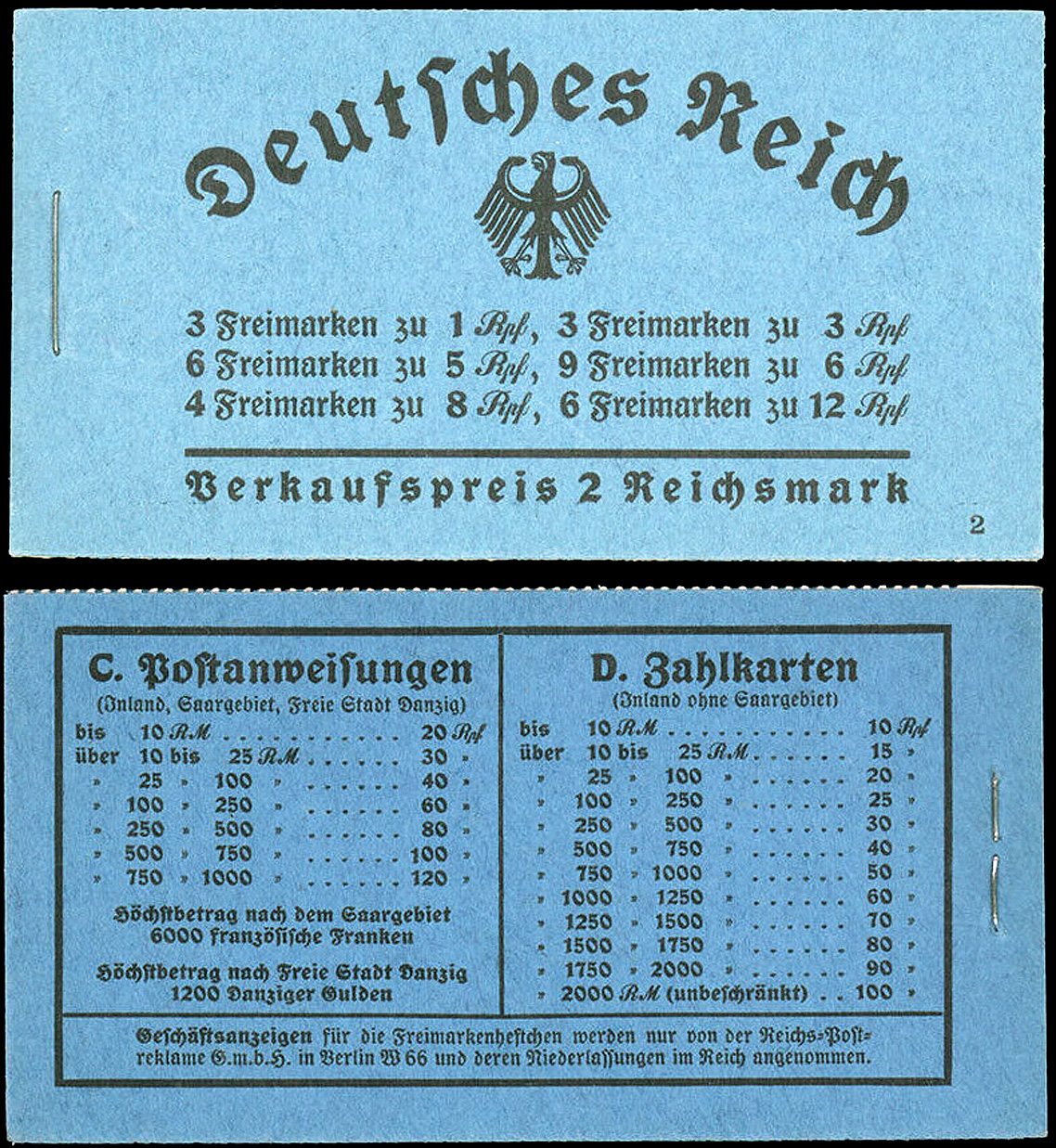

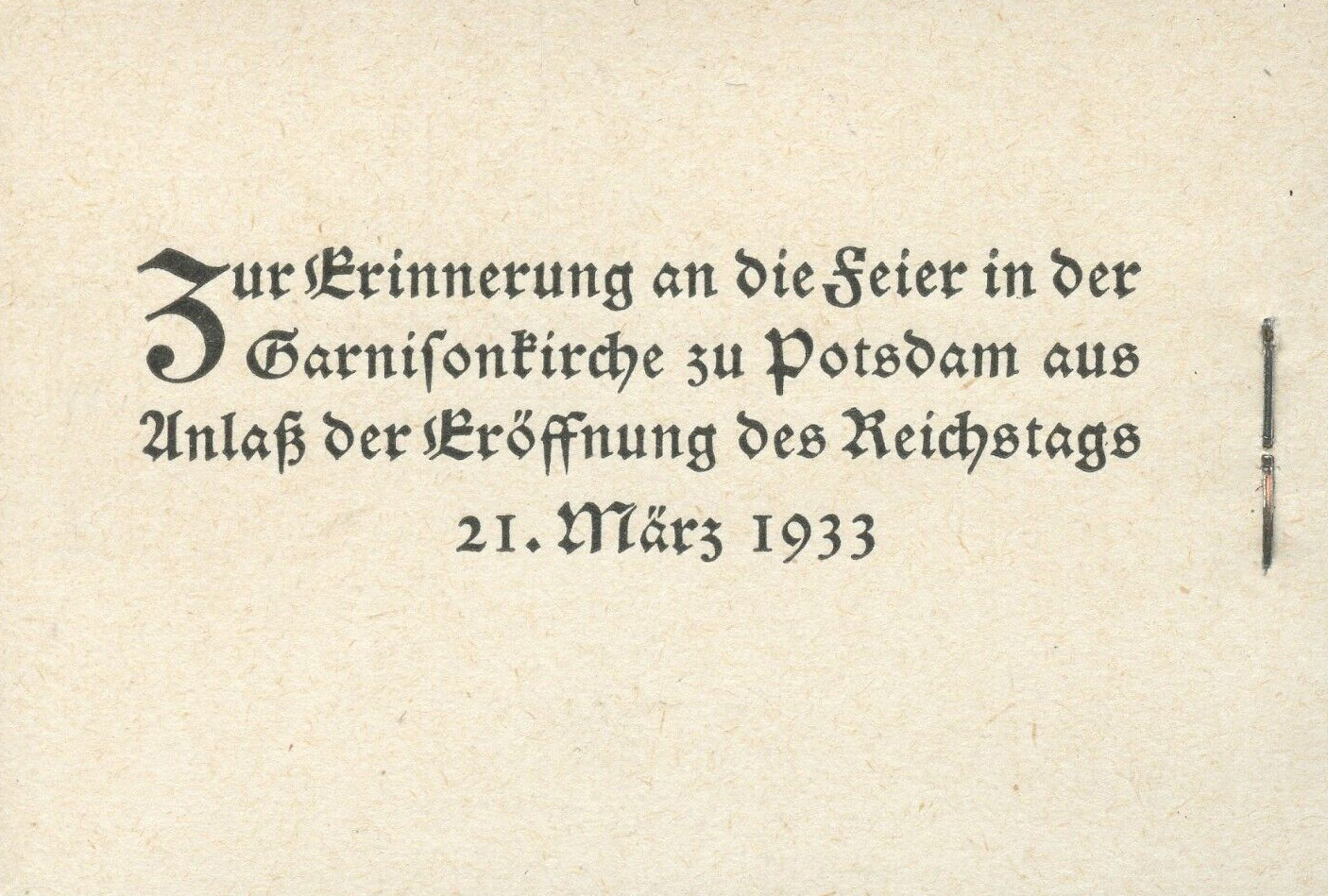

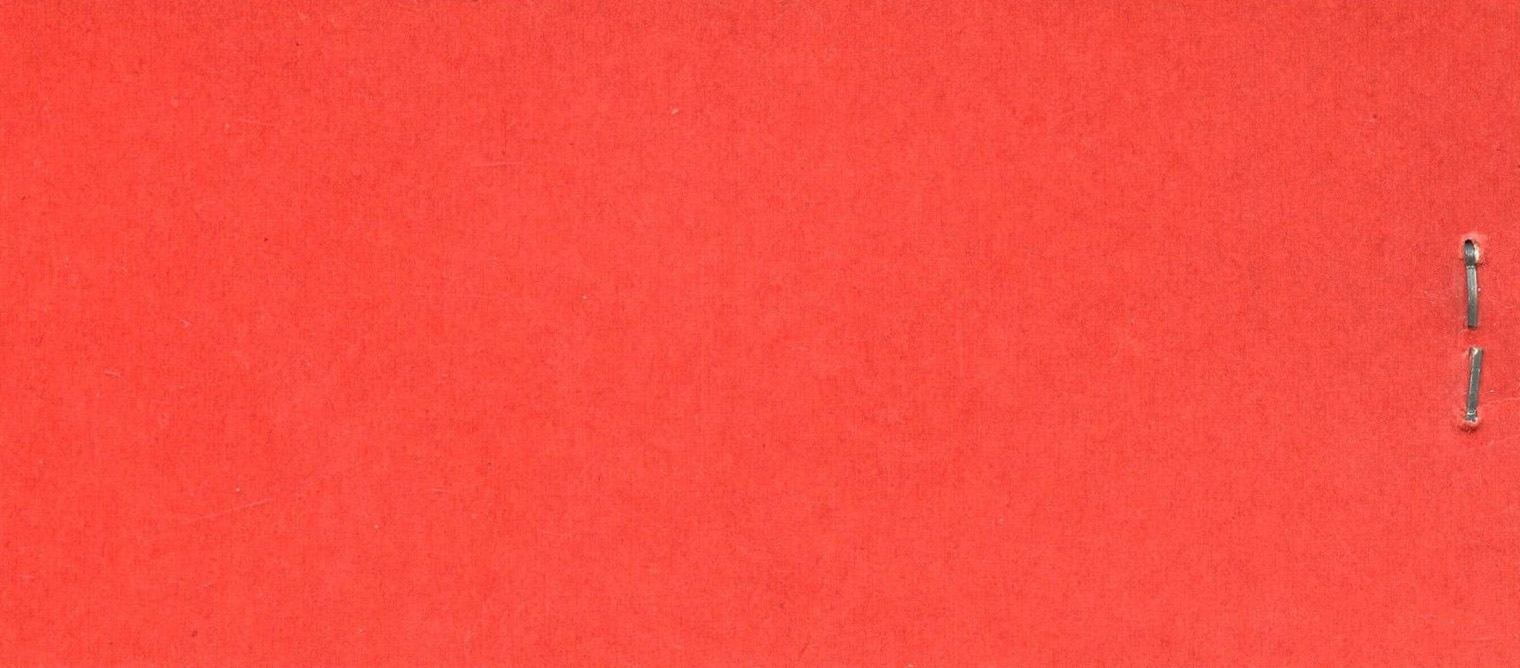
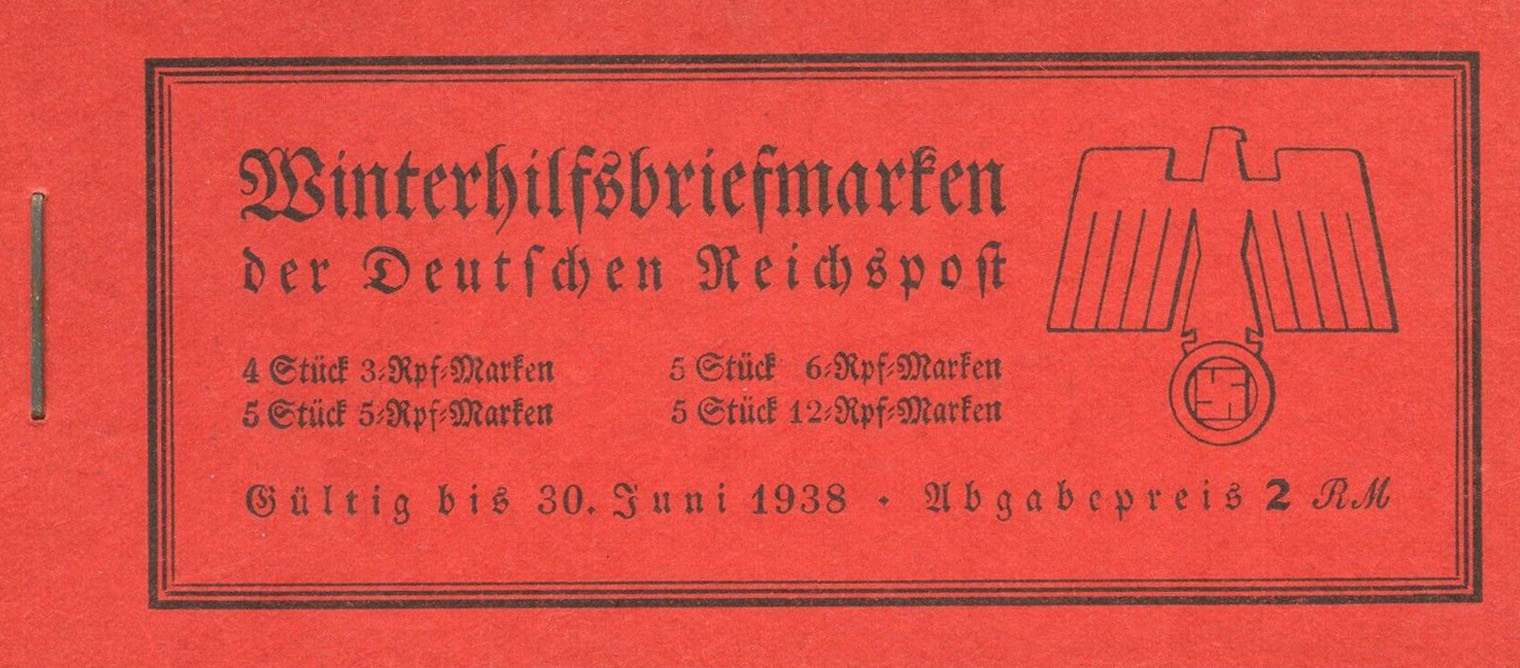
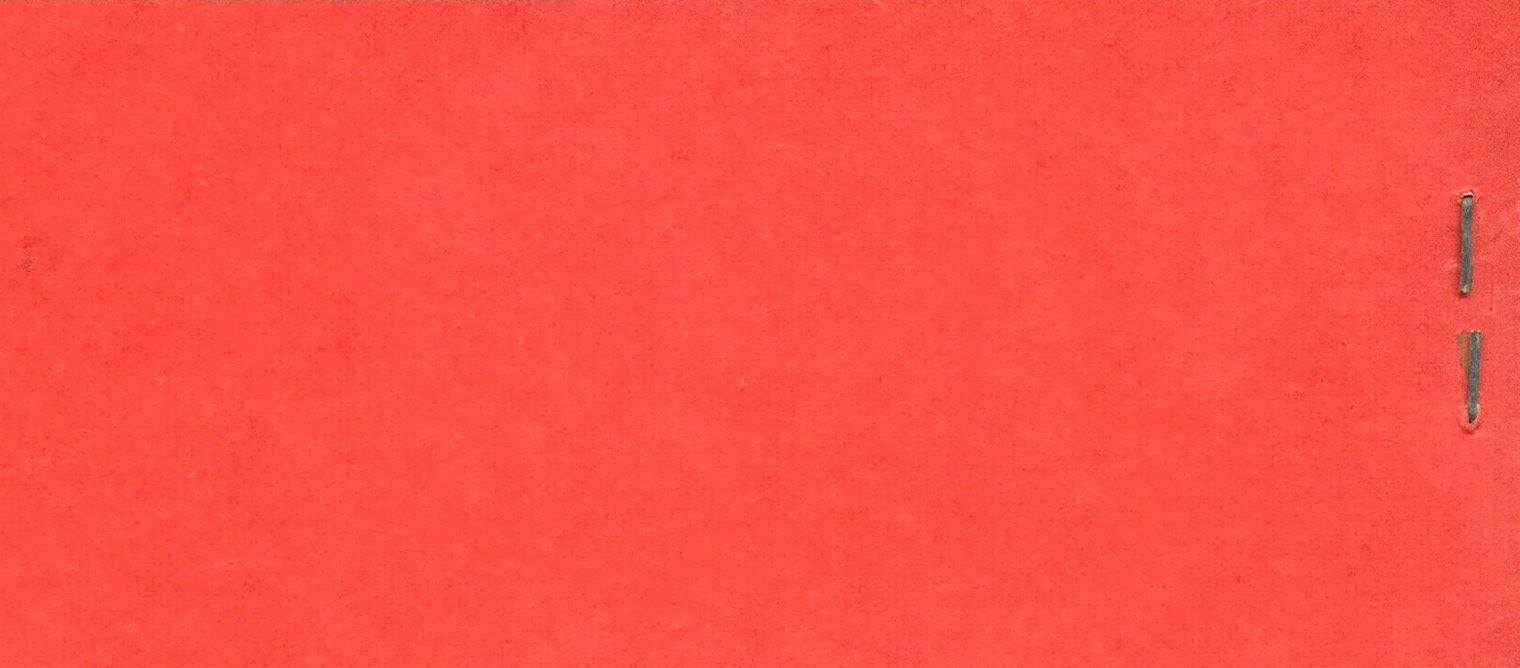
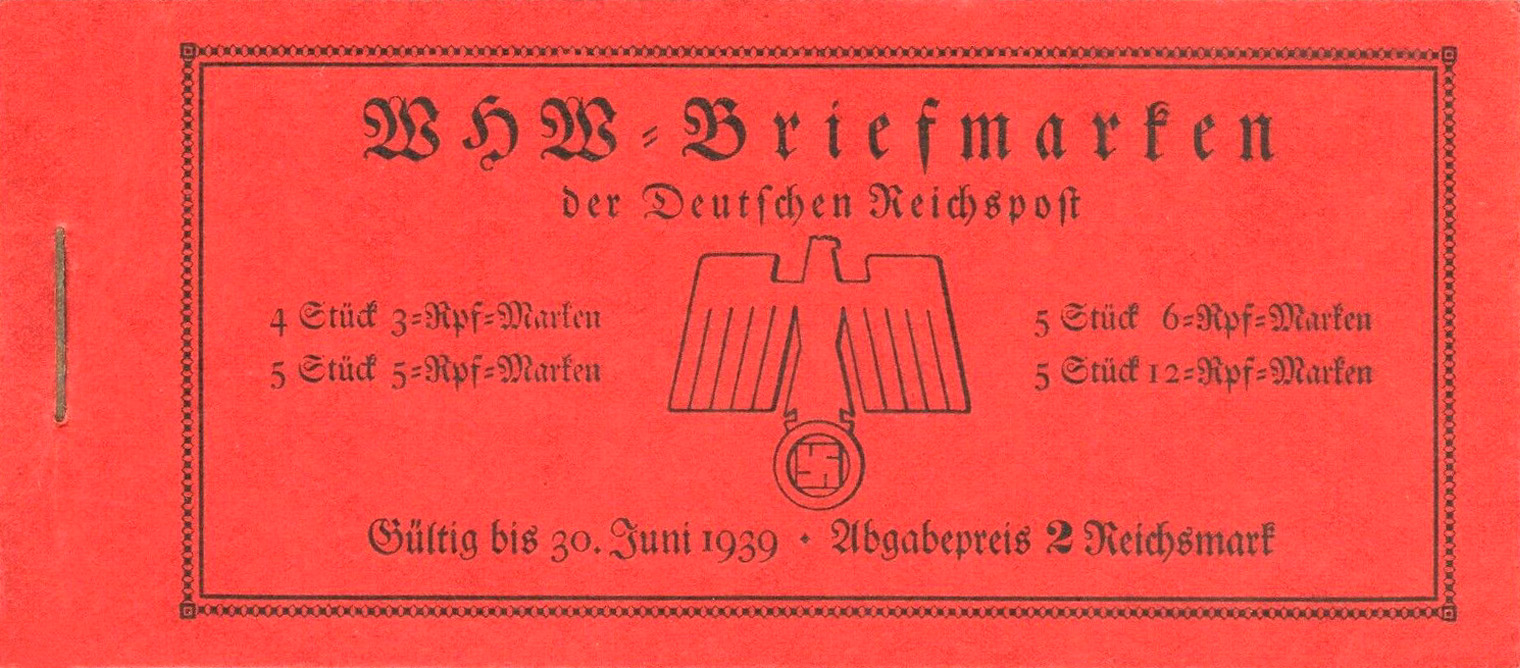



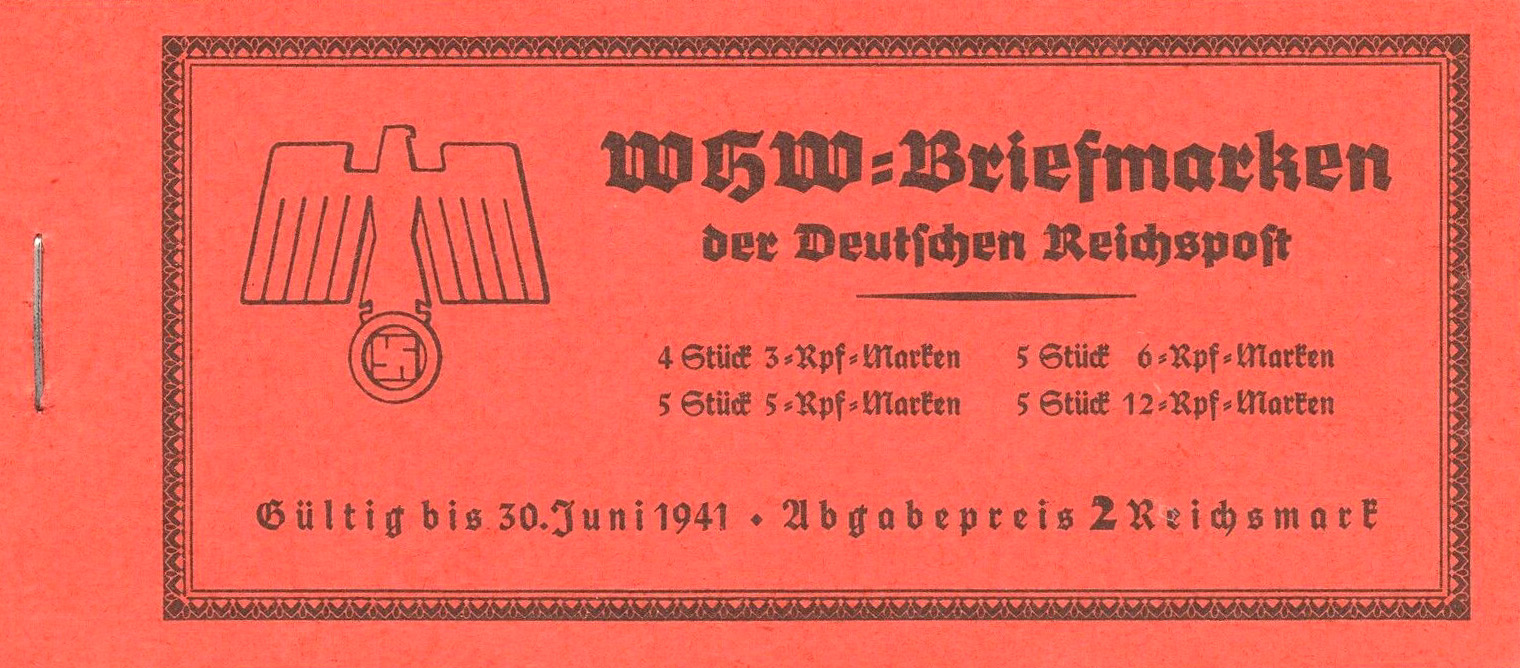

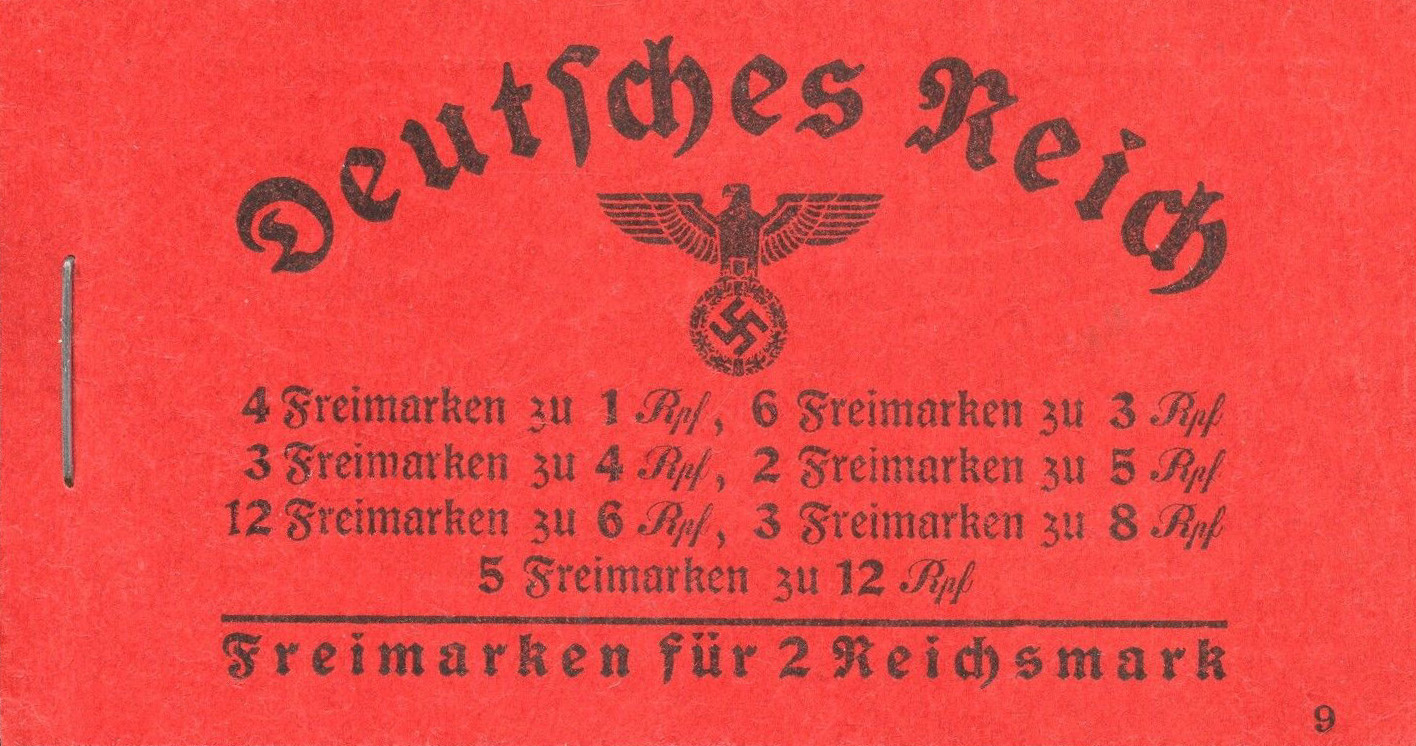


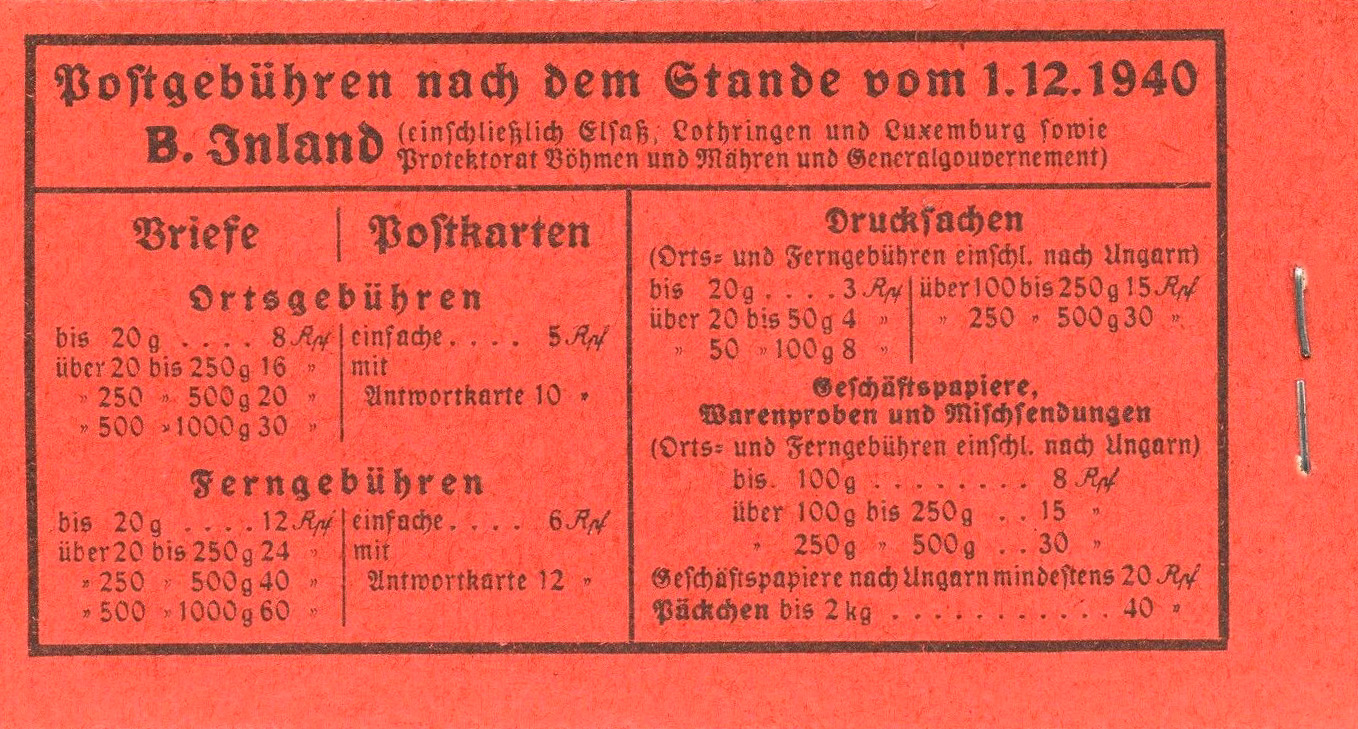
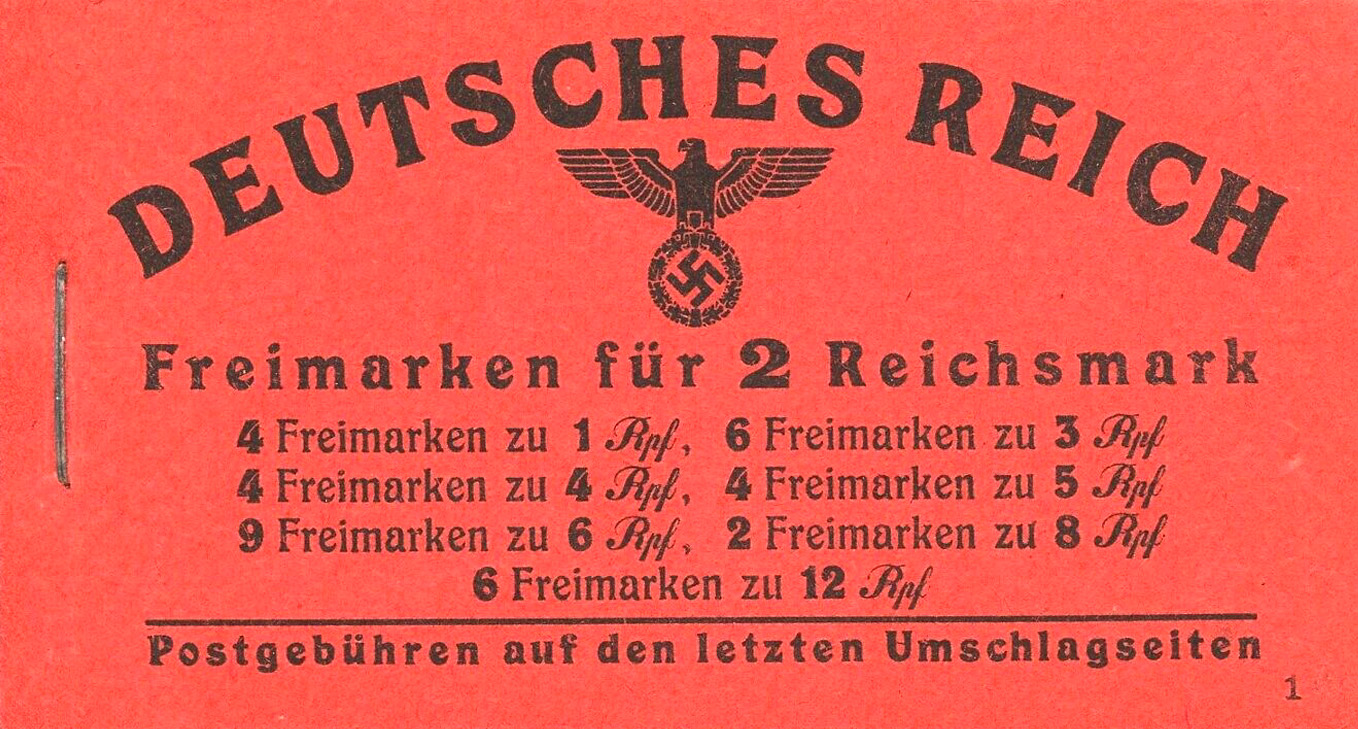



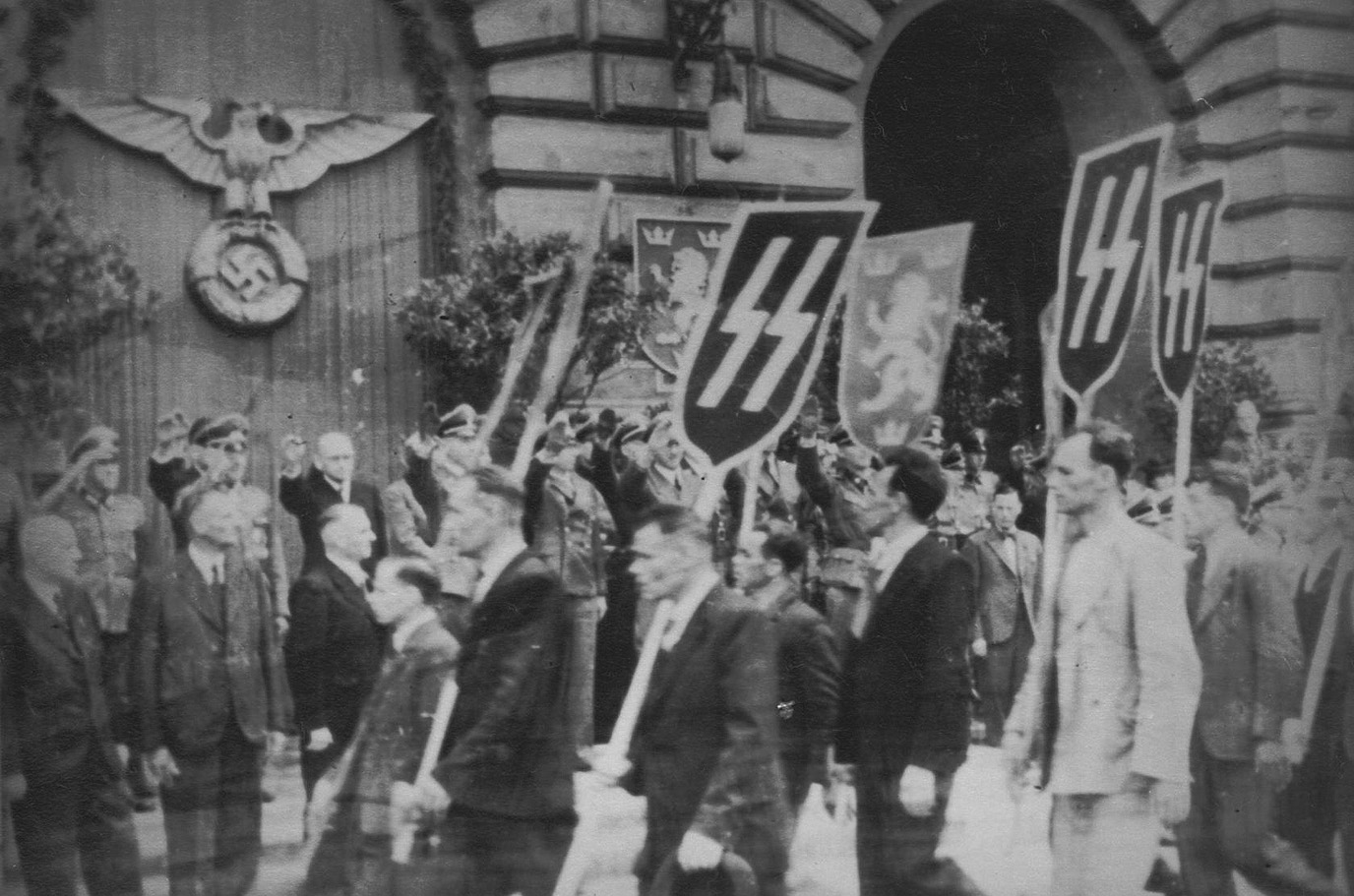
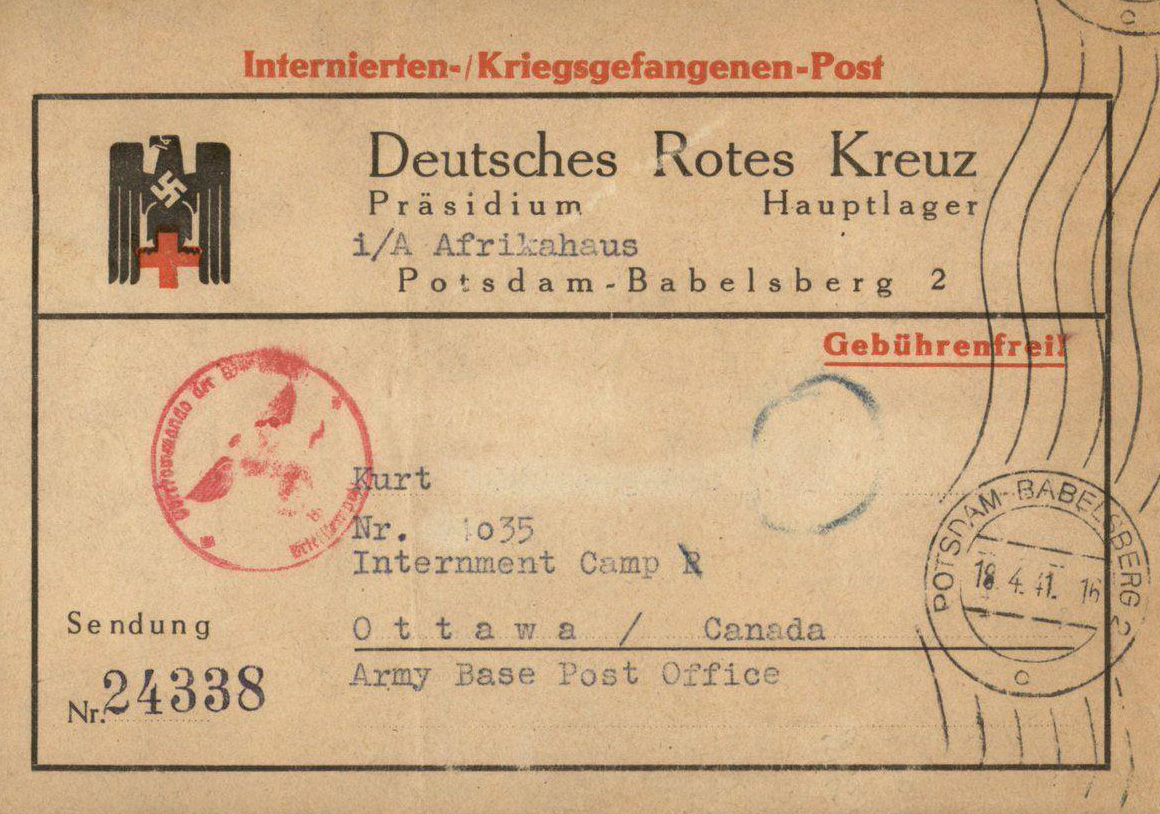
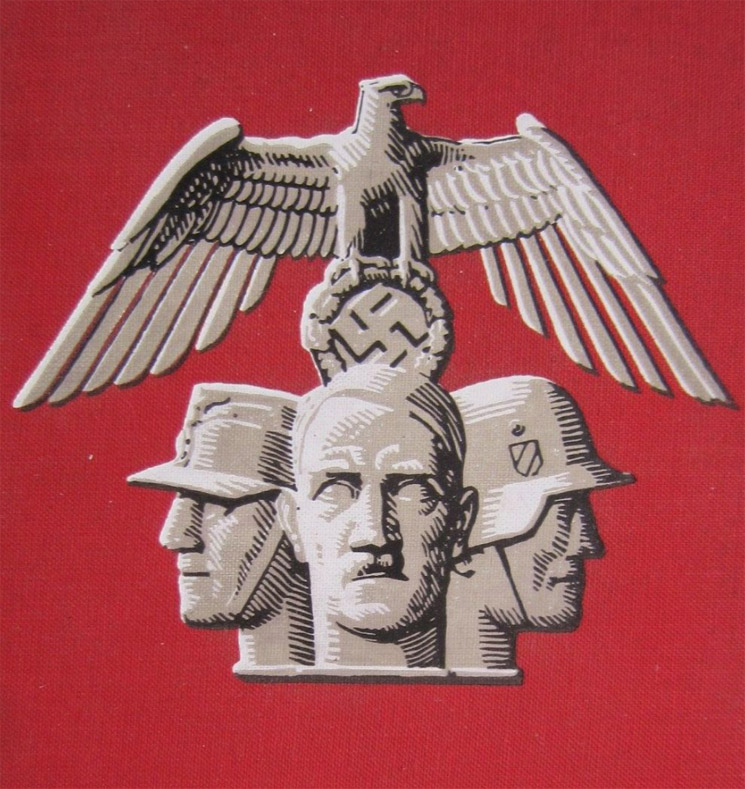
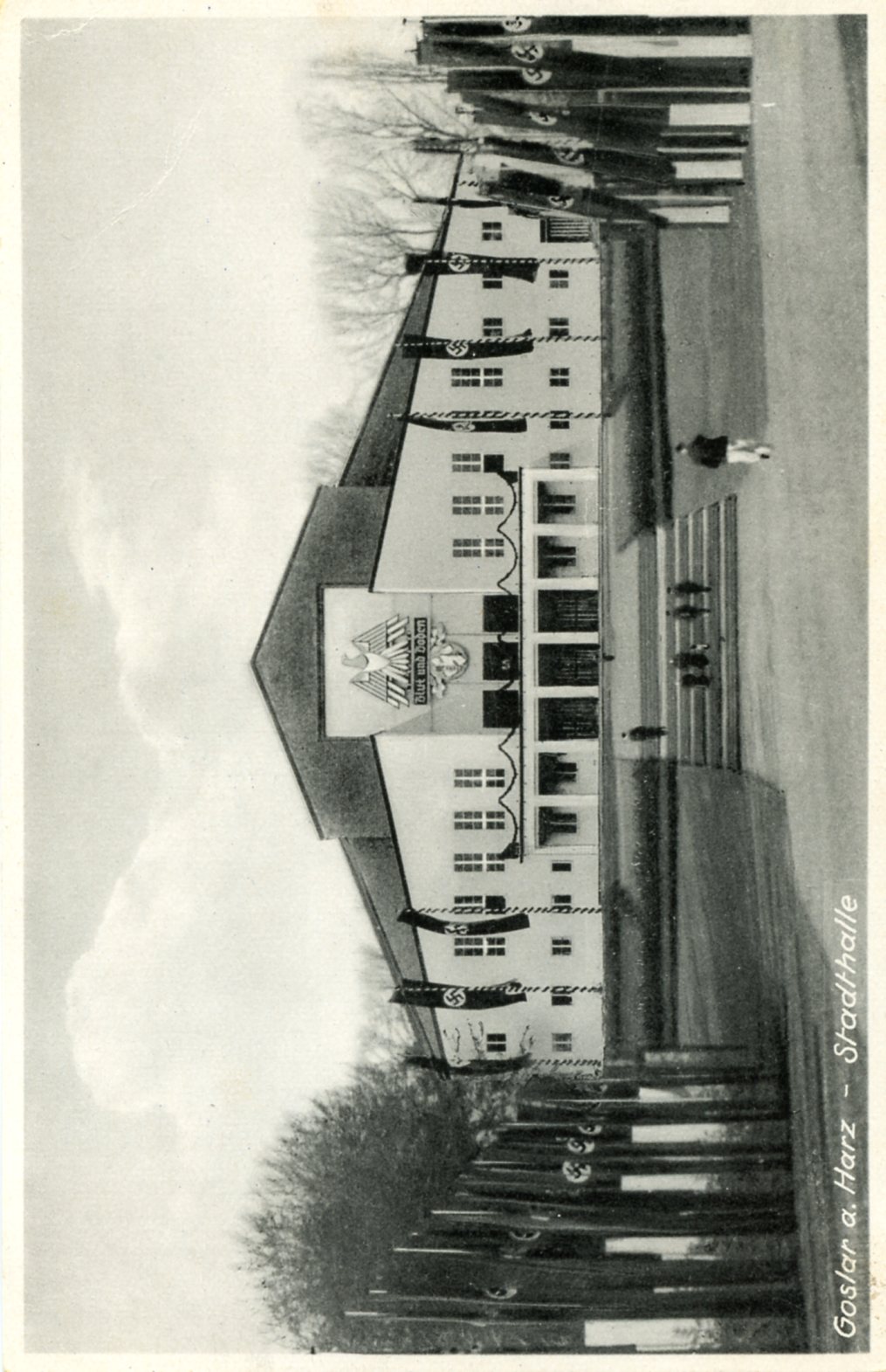
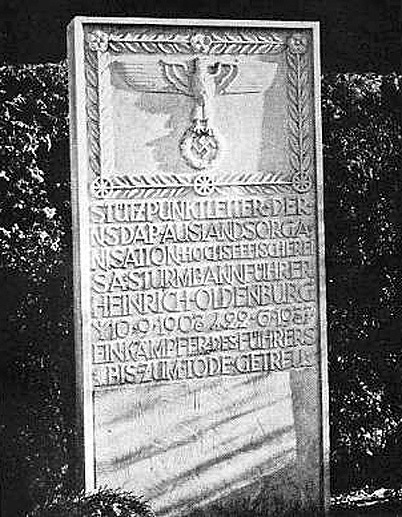
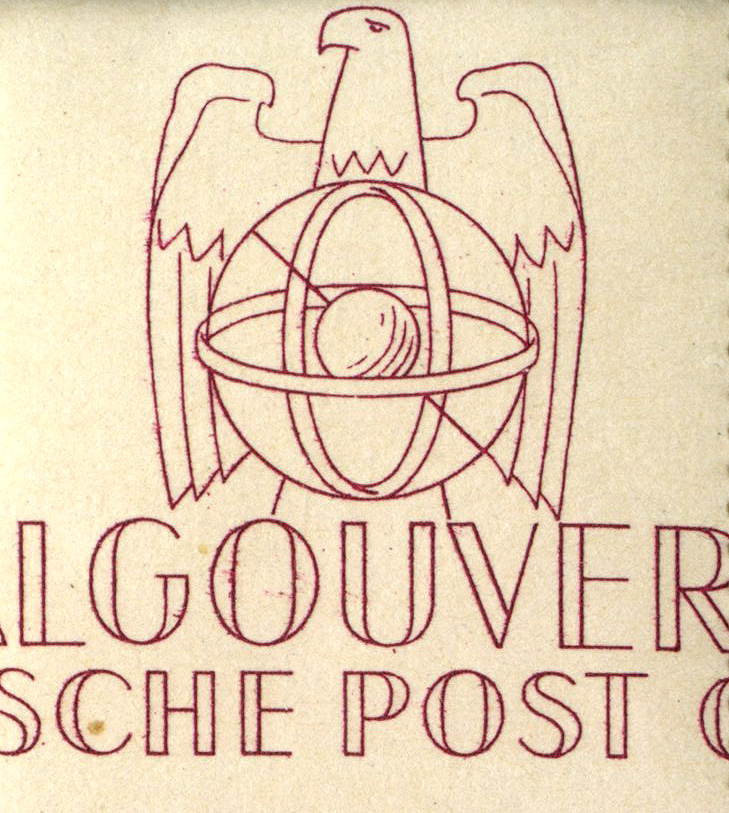
England! Dein Werk!
England! Your work!)]
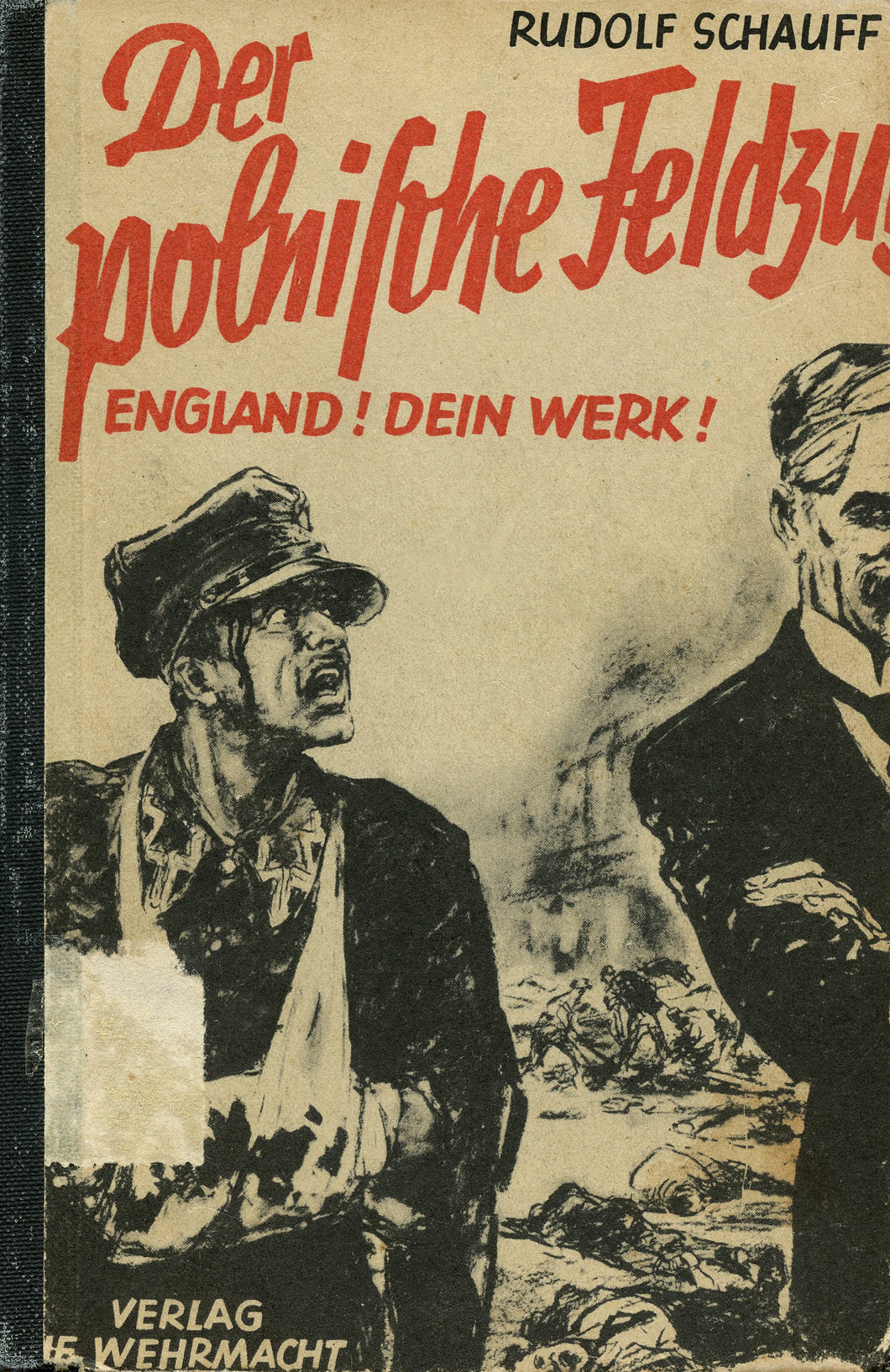
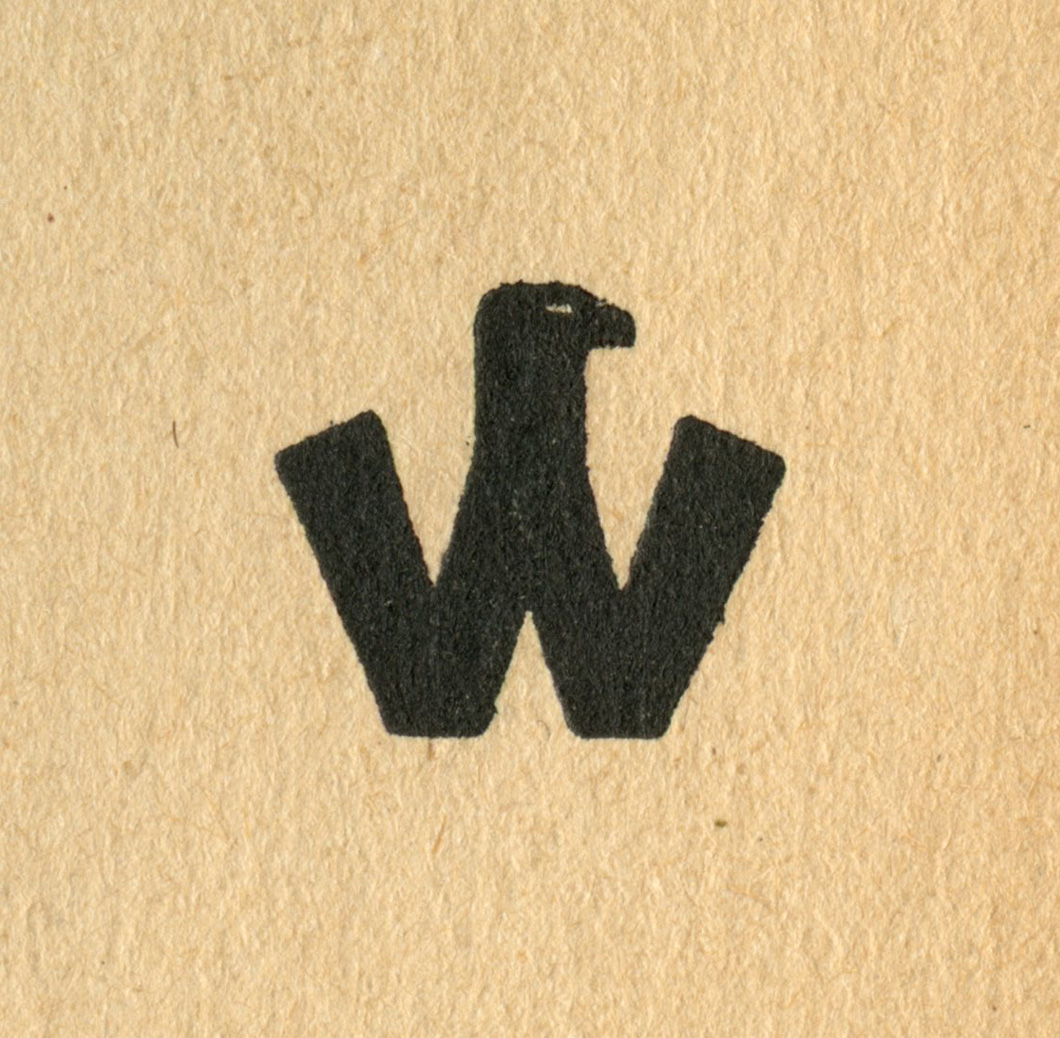
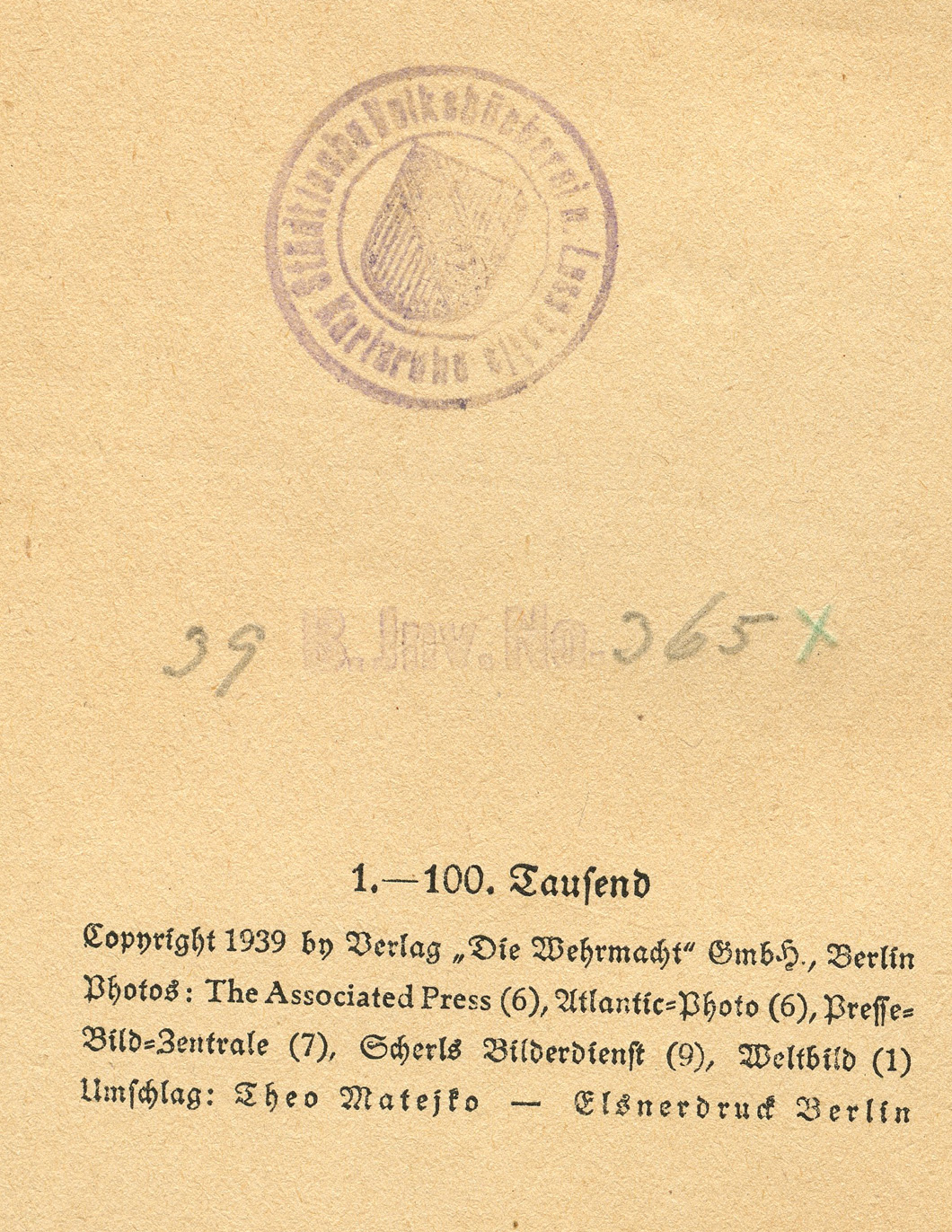
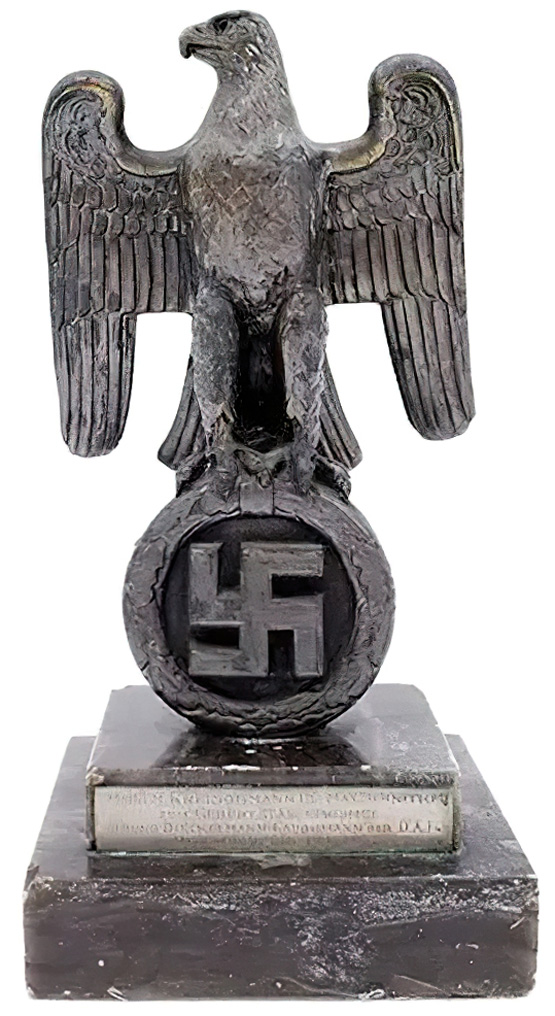
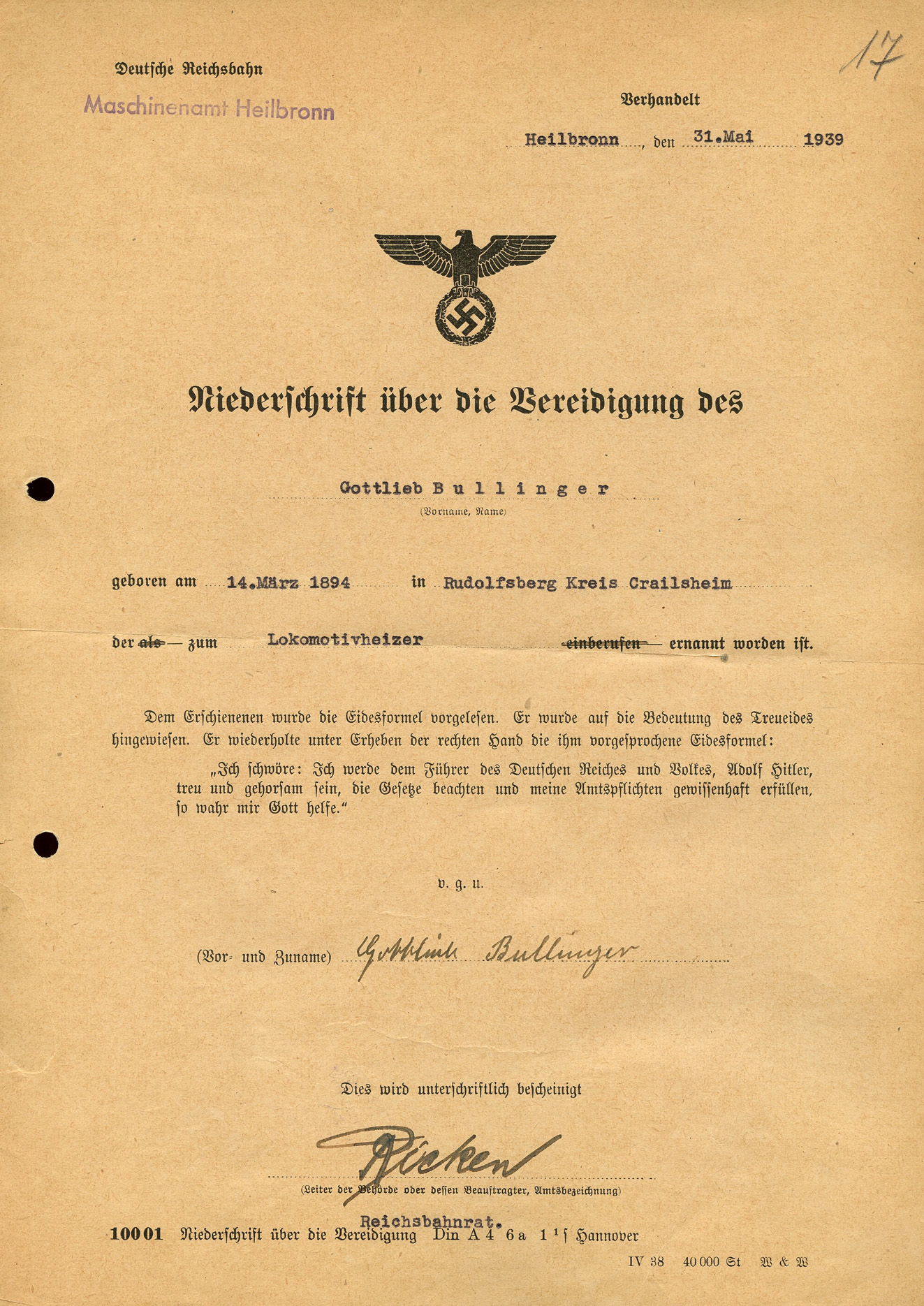
treu und gehorsam fein, die Gefetze beachten und meine Amtspflichten gewissenhaft erfüllen,
so wahr mir Gott helfe'
observe the laws and fulfill my official duties conscientiously,
so help me God).]
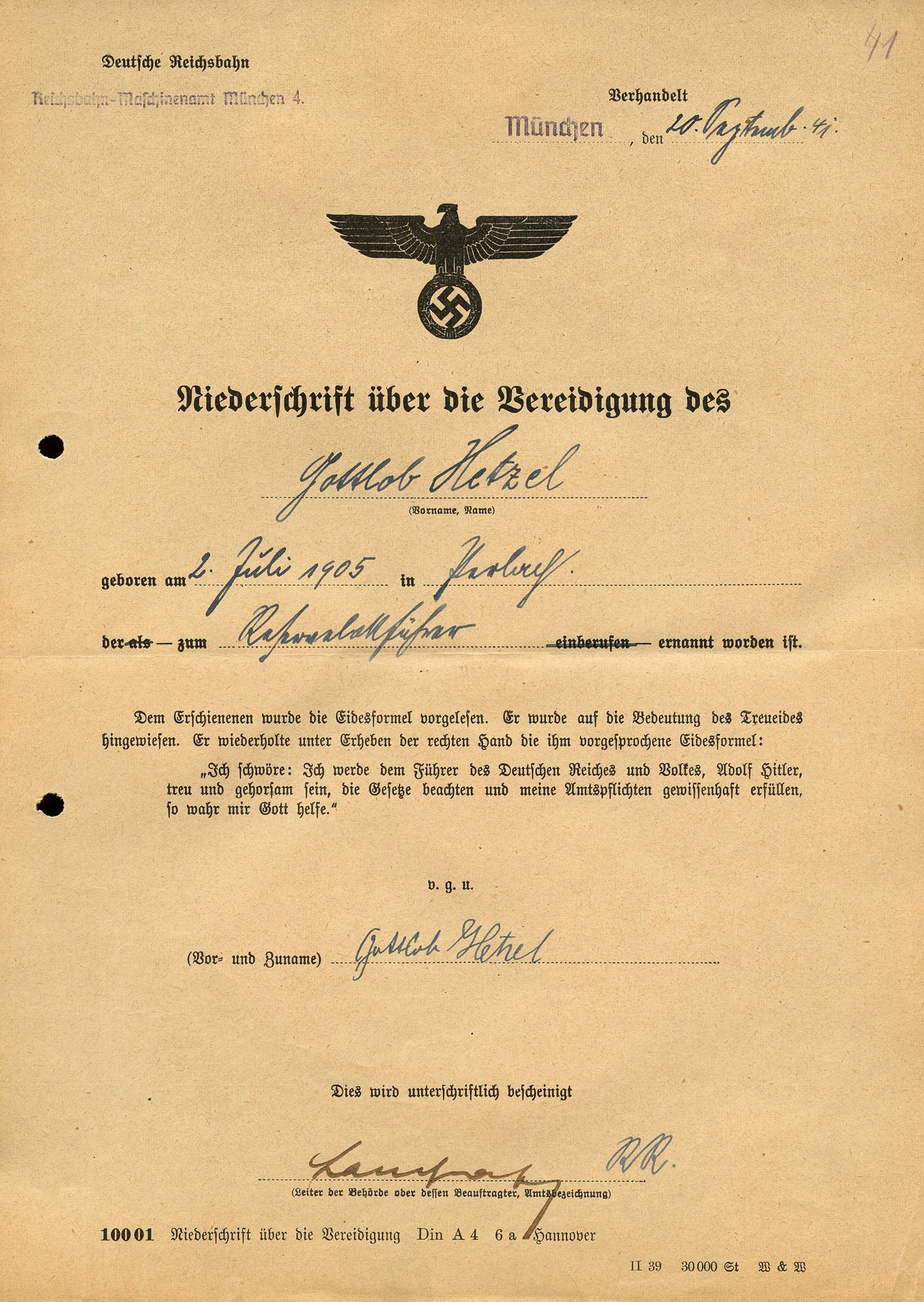



Abgeliefert
Verbraucherabschnitt
Inhaber dieses Abschnittes hat
50 kg Altpapier
abgeliefert
Der Verbracherabschnitt
ist gültig zum Bezug von
5 kg packpapier
oder
500 Blatt Schreibmaschinenpapier'
Delivered
Consumer section
Holder of this section has
50 kg of waste paper
delivered
The consumer section
is valid for the purchase of
5 kg of wrapping paper
or
500 sheets of typing paper).]

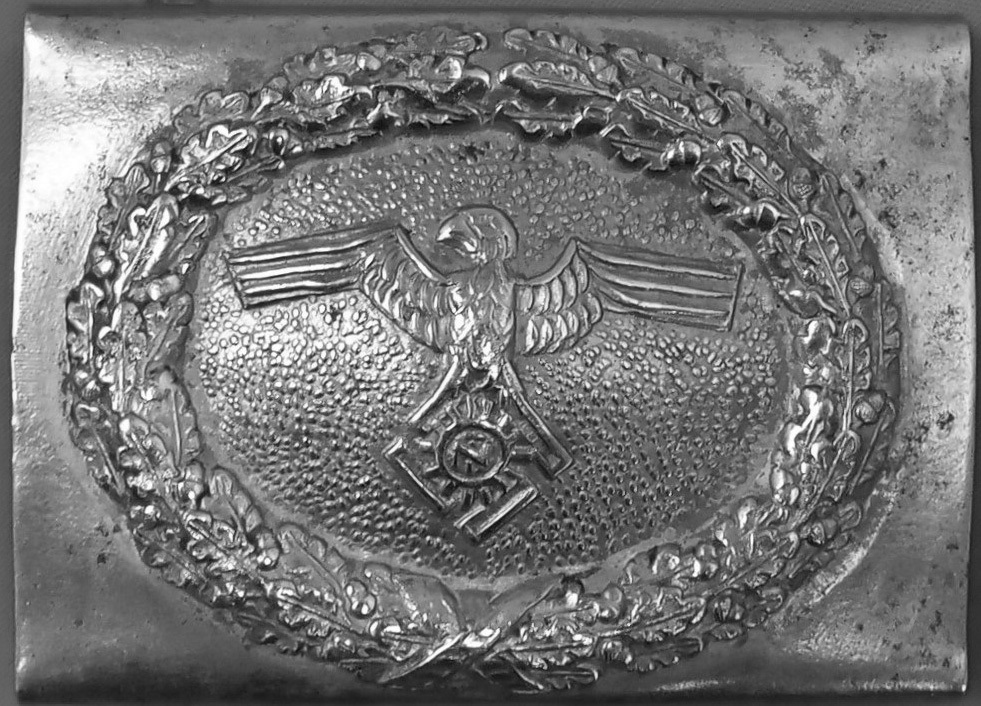
Aus Anlaß des 10jährigen Bestehens der Ortsgruppe findet
am Sonntag, dem 2. März, nachm. 430 Uhr, im Saale der Pgn.
Schiffer, Peterstr. eine
Großkundgebung
statt, in der Gauleiter Staatsrat Pg. Florian spricht.
Ich lade Sie zu dieser Festveranstaltung herzlichst ein und
würde mich freuen, Zie bei uns begrüßen zu dürfen.
Nach Beendigung der Großkundgebung wollen Sie sich einem
kameradschaftlichen Zusammensein im Parkhaus einfinden.'
On the occasion of the 10th anniversary of the local group
on Sunday, March 2, after 4:30 o'clock, in the hall of the Pgn.
Schiffer, Peterstr.
Large rally
Gauleiter Staatsrat Pg. Florian will speak.
I cordially invite you to this festive event and would be
pleased to welcome you.
After the end of the rally, you can join us for a friendly get-
together in the parking garage.)
He served from in office from August 1, 1930 – April 17, 1945. After the war they put him in a concentration camp for years, but they never broke him, as much as they tried.
After finally being released, he remained a dedicated National Socialist until his death.]

